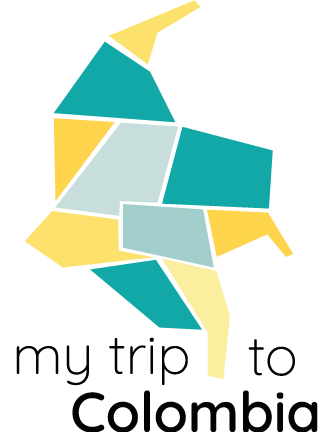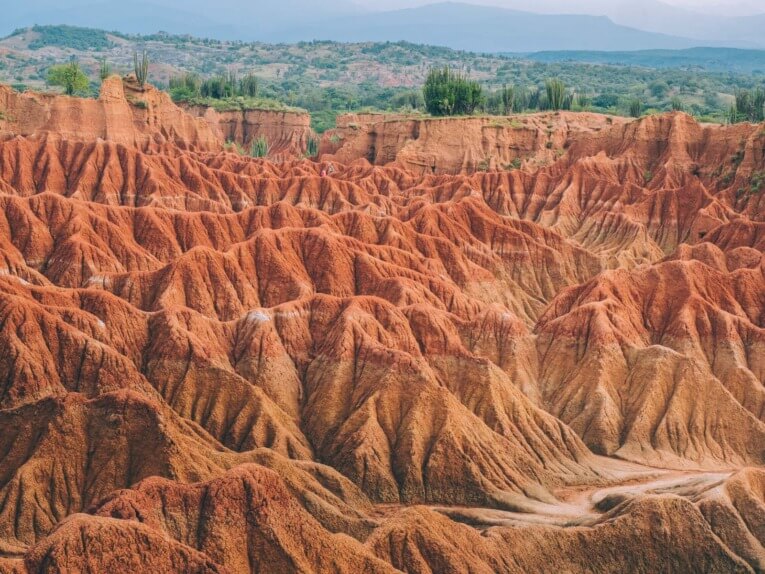The Tatacoa Desert is one of the natural wonder of Colombia. Many guidebooks mention it as one of the must-sees on a trip to Colombia!
We can’t deny its beauty, and we encourage you to discover this unique place and make it part of your itinerary, even if it’s sometimes difficult to fit it into a classic 3-week itinerary in Colombia.
For our part, we were heading down to San Agustin, so we included Tatacoa as a stop on our route. But it’s perfectly possible to visit the desert as a two-day round trip from Bogotá.
In this post we tell you all about our experience and give you all our tips for visiting the Tatacoa desert.
Disclaimer: we apologize in advance for any grammatical or syntactic errors, as our native language is not English (we're a Colombian-French couple), so we hope you'll forgive us and still enjoy the information we share with you! Please note that all the information on our blog is based on our own experience, and is checked and updated regularly.
Contents
Related posts

General information
- Tatacoa: means “rattlesnake” in native language
- When to go: all year round
- Temperatures: very hot during the day (40°) and cool at night (18°)
- Surface area: 330km2
- Ecosystem: Dry tropical forest
- Climate: Warm semi-arid
- Altitude: Average 400 m
- Region: Andes
- Department: Huila (45 km from Neiva / 5 km from Villavieja)
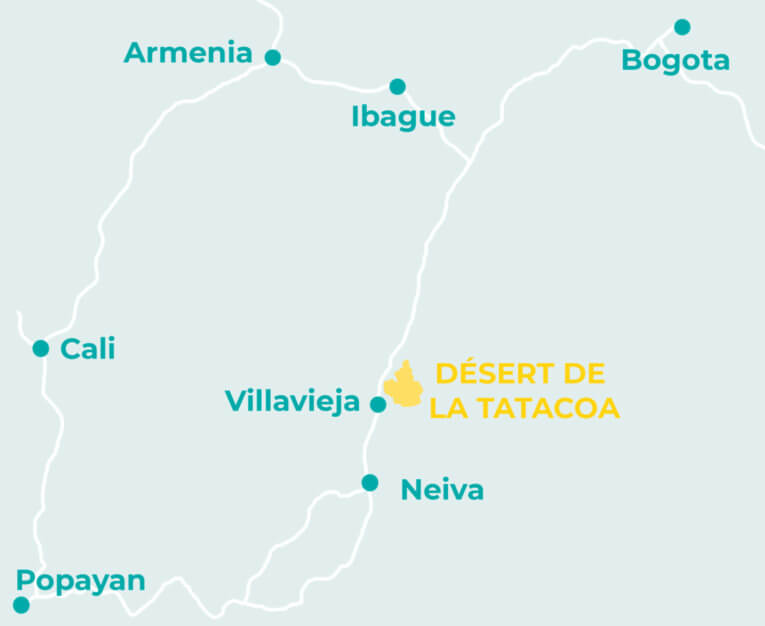
Exclusive 5% Off Discount For you
Best Travel insurance for Colombia
Our partner offers the best rates and a 5% discount for our blog readers! (regardless of travel dates)
The Tatacoa Desert in brief
An ecosystem unique in Colombia
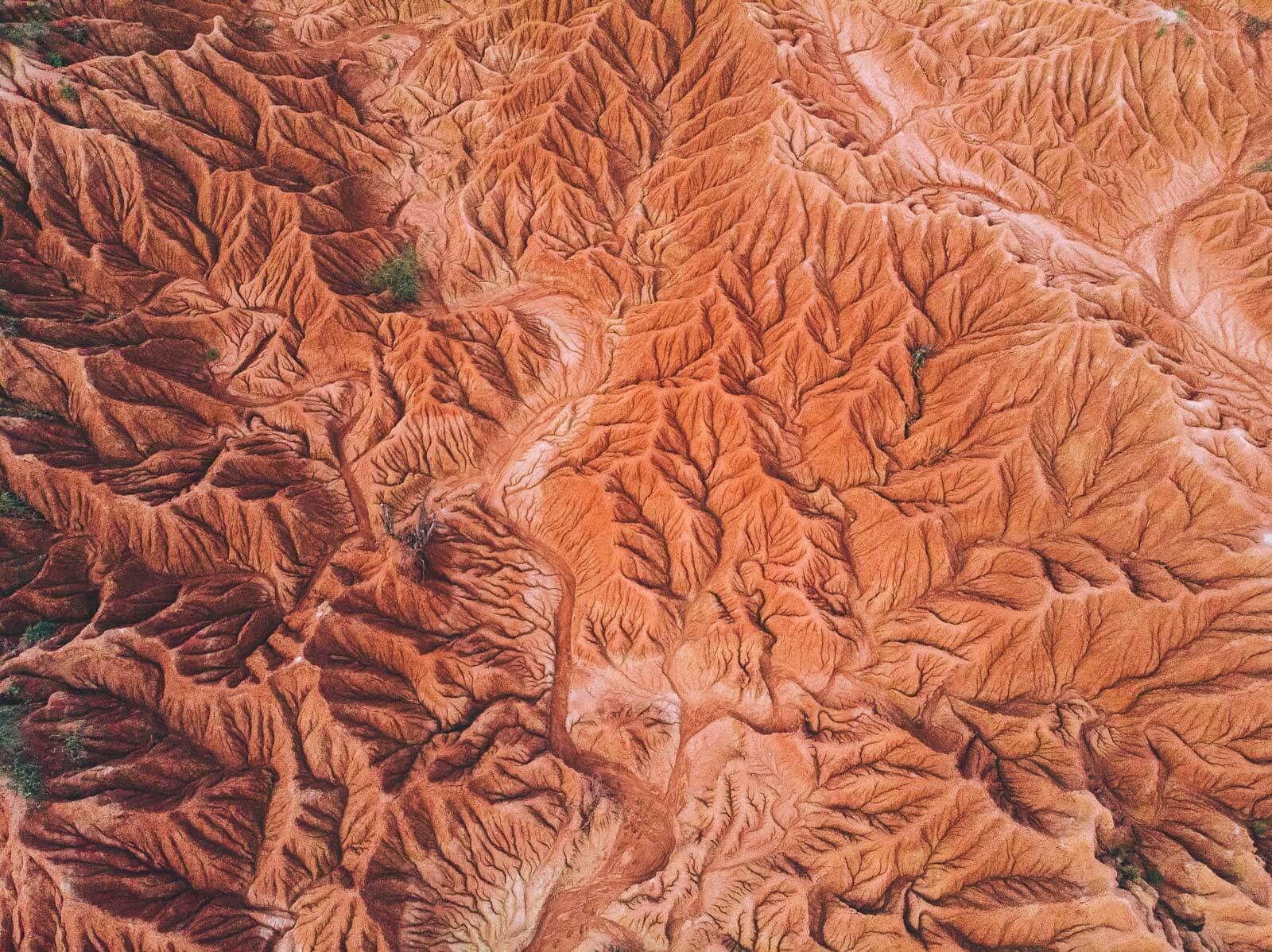
Between 16 and 10 million years ago, the Tatacoa region was in fact a tropical rainforest similar to what we see today in Amazonia. A forest that offered ideal conditions for the presence of numerous species of flora and fauna.
Scientists speculate that the site gradually dried out as the Cordillera Oriental rose, altering the riverbeds and depriving the area of its water supply.
Over time, Tatacoa became the second driest area in Colombia (after the Guajira desert). But contrary to what its common name might suggest, the Tatacoaecosystem is not a desert, it’s a tropical dry forest!
Desert flora and fauna
The flora and fauna present in the Tatacoa desert today are rather poor, but have adapted perfectly to the area’s hot, dry conditions.
Typical desert fauna includes snakes, rodents, spiders, scorpions and lizards, as well as tortoises, ocelots, peccaries, deer, skunks, margays..
Cacti are the most visible vegetation in the desert, with many different varieties, from the smallest to the largest. Some Tatacoa cactus specimens can reach up to five meters in height!
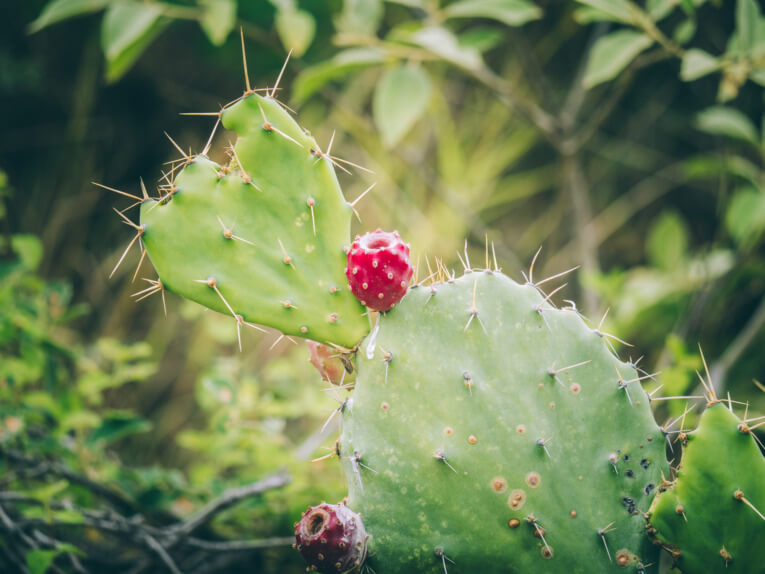
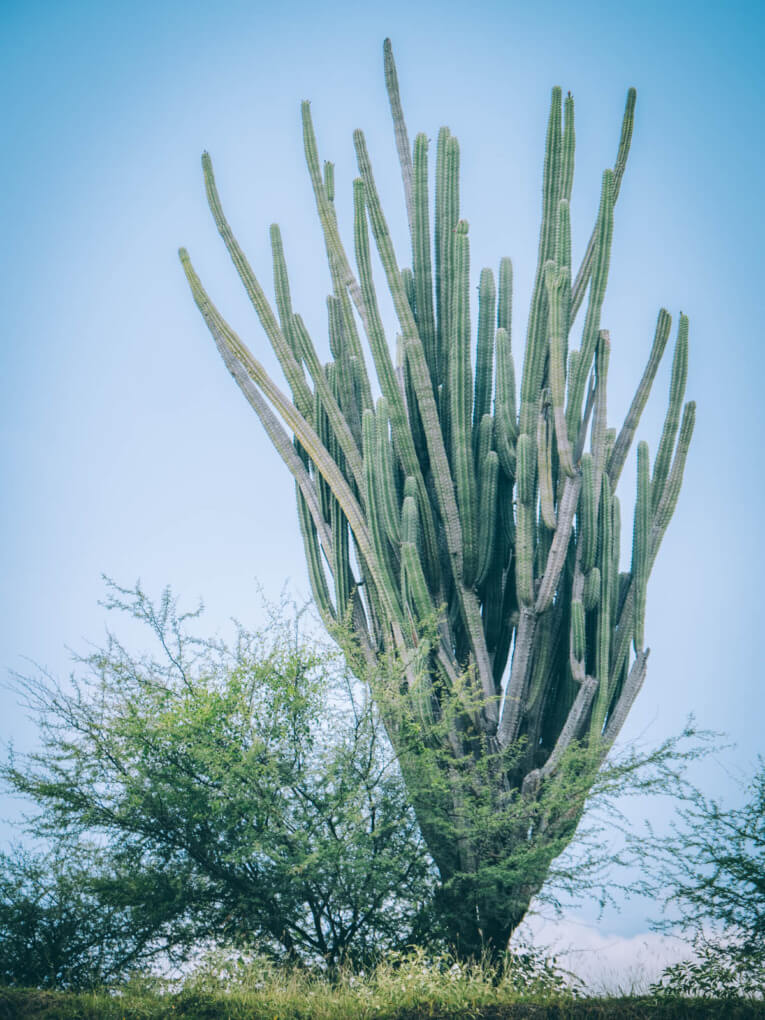
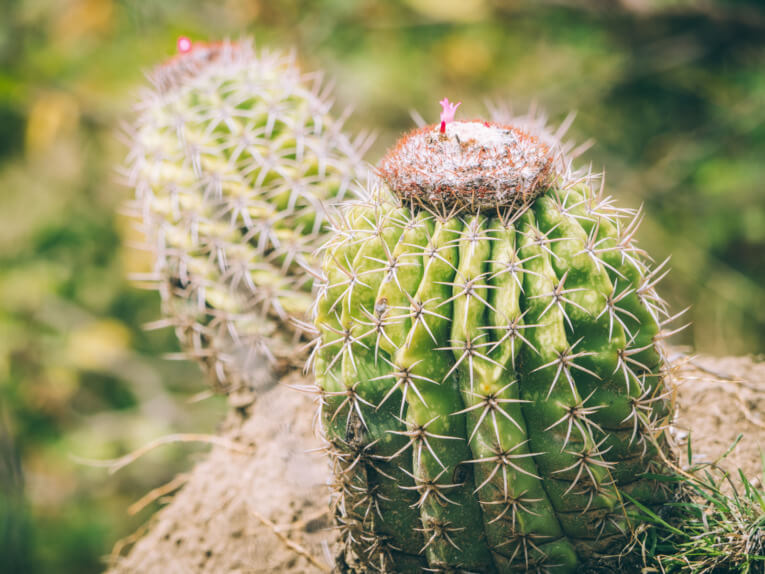
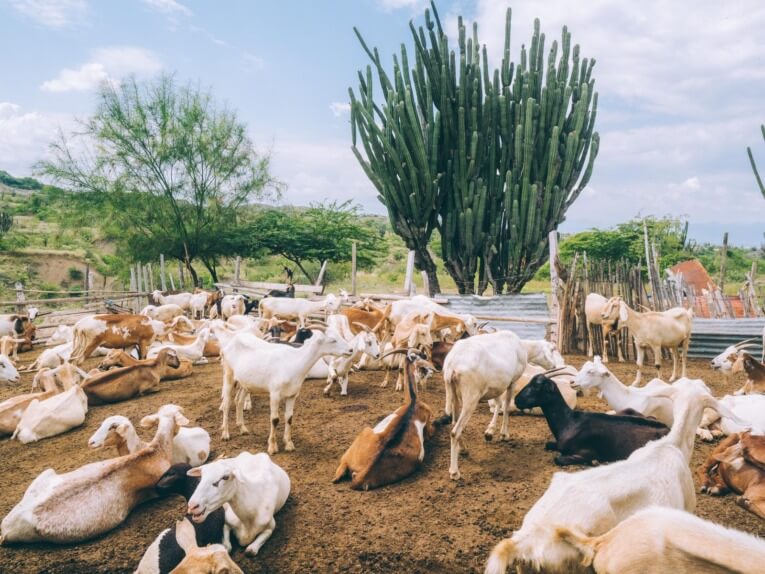
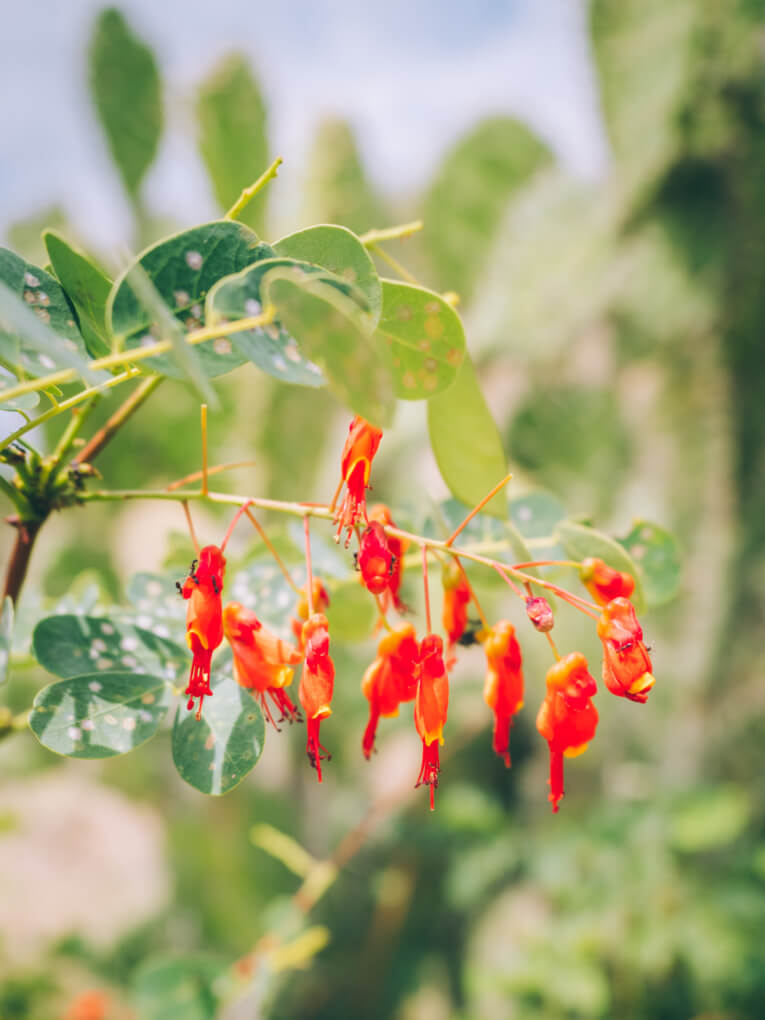
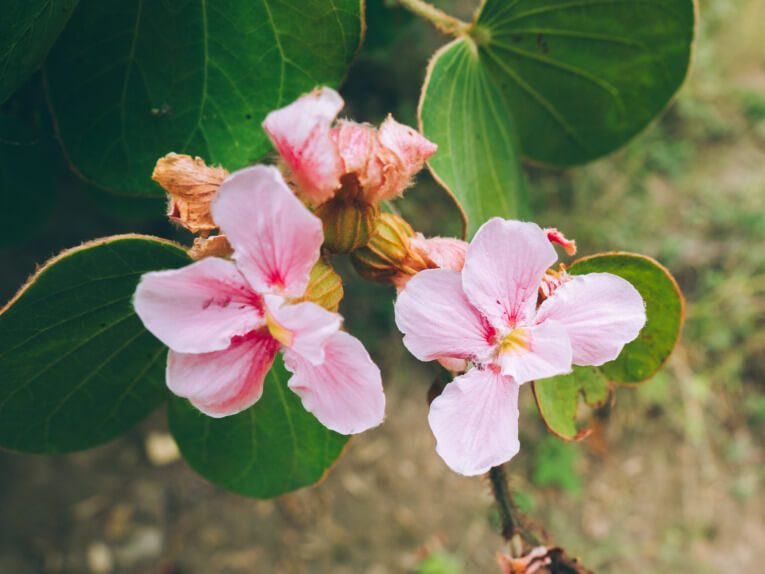
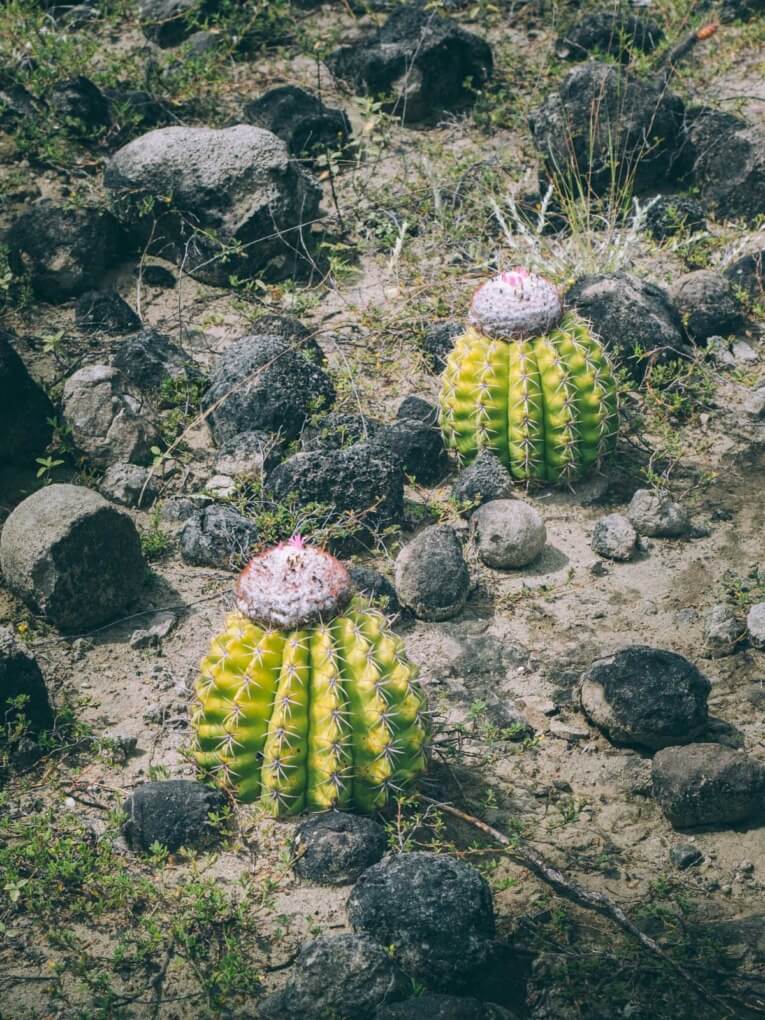
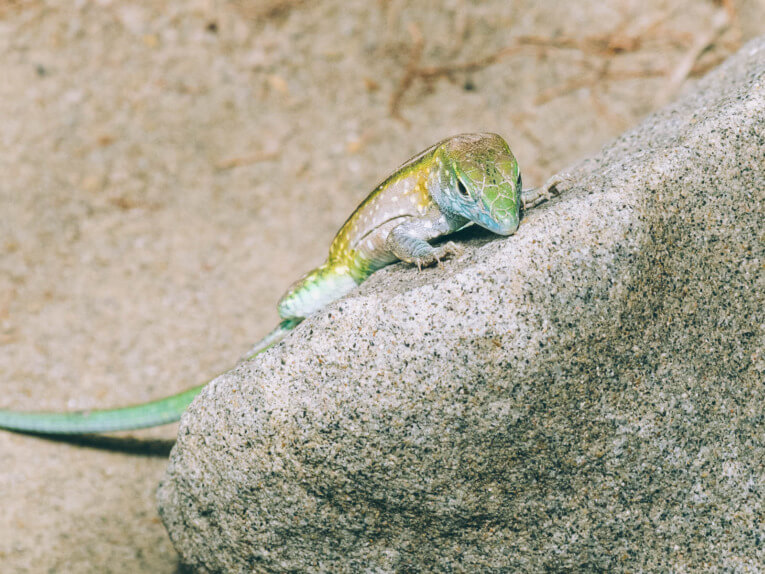
Paleontology site
The Tatacoa Desert has been attracting geologists and palaeontologists for over 100 years for its enormous quantities of fossils. But it’s only been a few years since Colombian scientists took hold of this globally important site.
Scientists are convinced that La Tatacoa has material for at least another 200 years of research. It’s a unique site that is sure to help us better understand the history of biodiversity in Colombia, particularly that which inhabited the national territory some 10 million years ago.
THE VALLEY OF SADNESS
The “Valley of Sadness” is what the colonizers called this place when they arrived in the Tatacoa desert. The conquistadores were impressed by the region’s dry desert aspect.
Yet the desert is now known as Tatacoa. This was the name given to the rattlesnake in the region. (Yararaca in the indigenous language of the Doches and Yaporoes of the large Pijaos family living in the area). With its labyrinths winding between rock formations, the name Tatacoa came about in reference to its snake-like shape.
Tip: Tatacoa desert tour agency
Tatacoa local agency
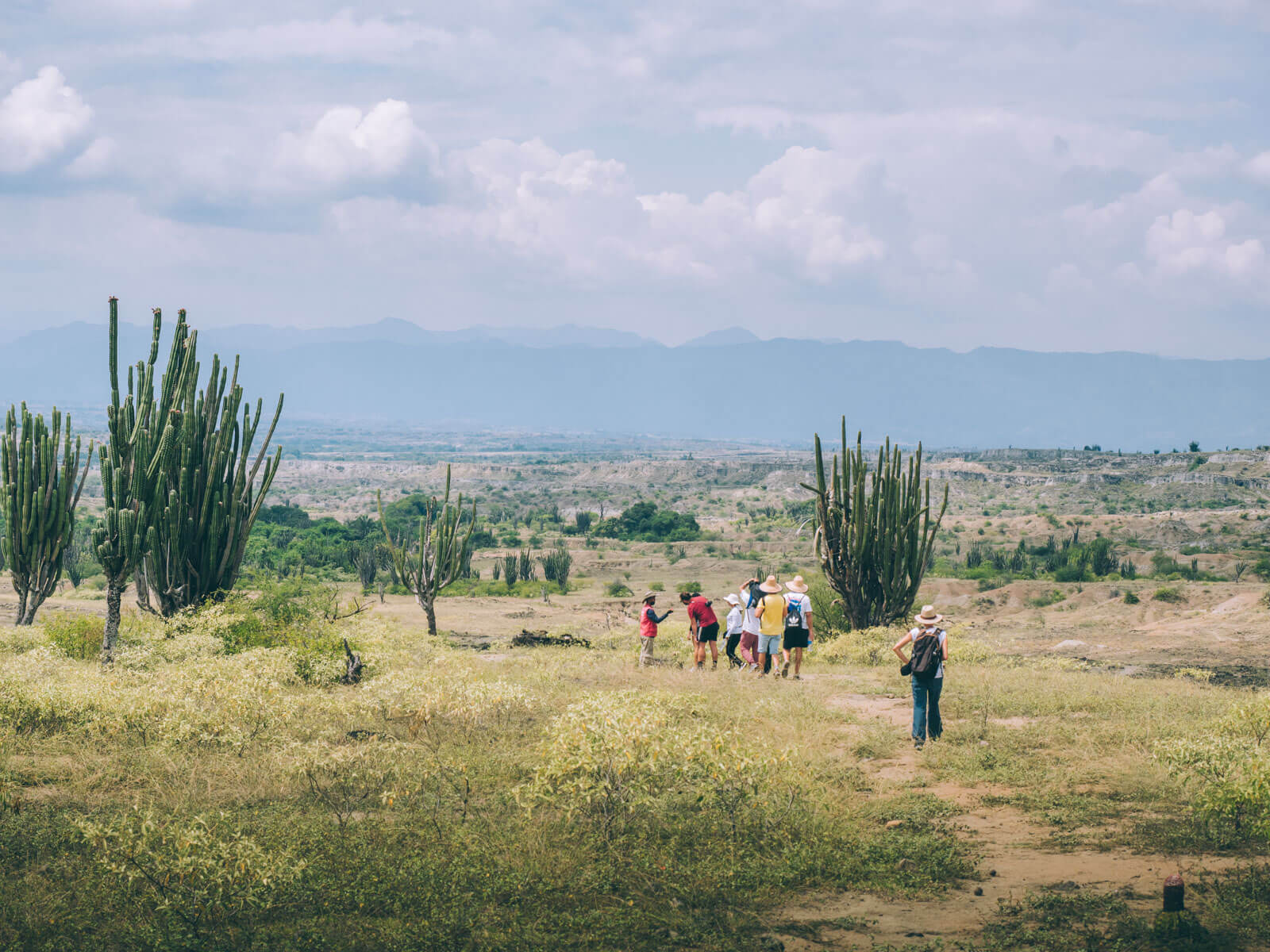
If you’d like to include Tatacoa in your travel itinerary in Colombia, we recommend that you contact our local partner in Neiva.
The guides are desert dwellers with a passion for their land and a thorough knowledge of every corner, its customs and culture. Service can be provided in Spanish or English.
The agency also offers accommodation on a farm in the middle of the desert, in tents with mattresses or in recently-built wooden huts. The idea is to immerse yourself in the local culture and share experiences with the desert’s inhabitants.
Excursions from Neiva
The agency specializes in excursions in the Tatacoa desert, and offers a variety of options:
- One-day excursion
- 2-day excursions
- 3-day excursions
Contact local agency in Neiva
Responsible tourism
For our partner agency, tourism must be a source of development in remote communities, generating empathy with the aim of preserving natural resources, protecting the environment and ensuring the survival of cultures. The idea, in turn, is to awaken the same awareness in tourists.
The agency makes a point of paying fair prices to the desert families they work with, with the aim of enabling them to diversify their source of income (often linked to livestock farming).
What to do in the Tatacoa desert
Our experience
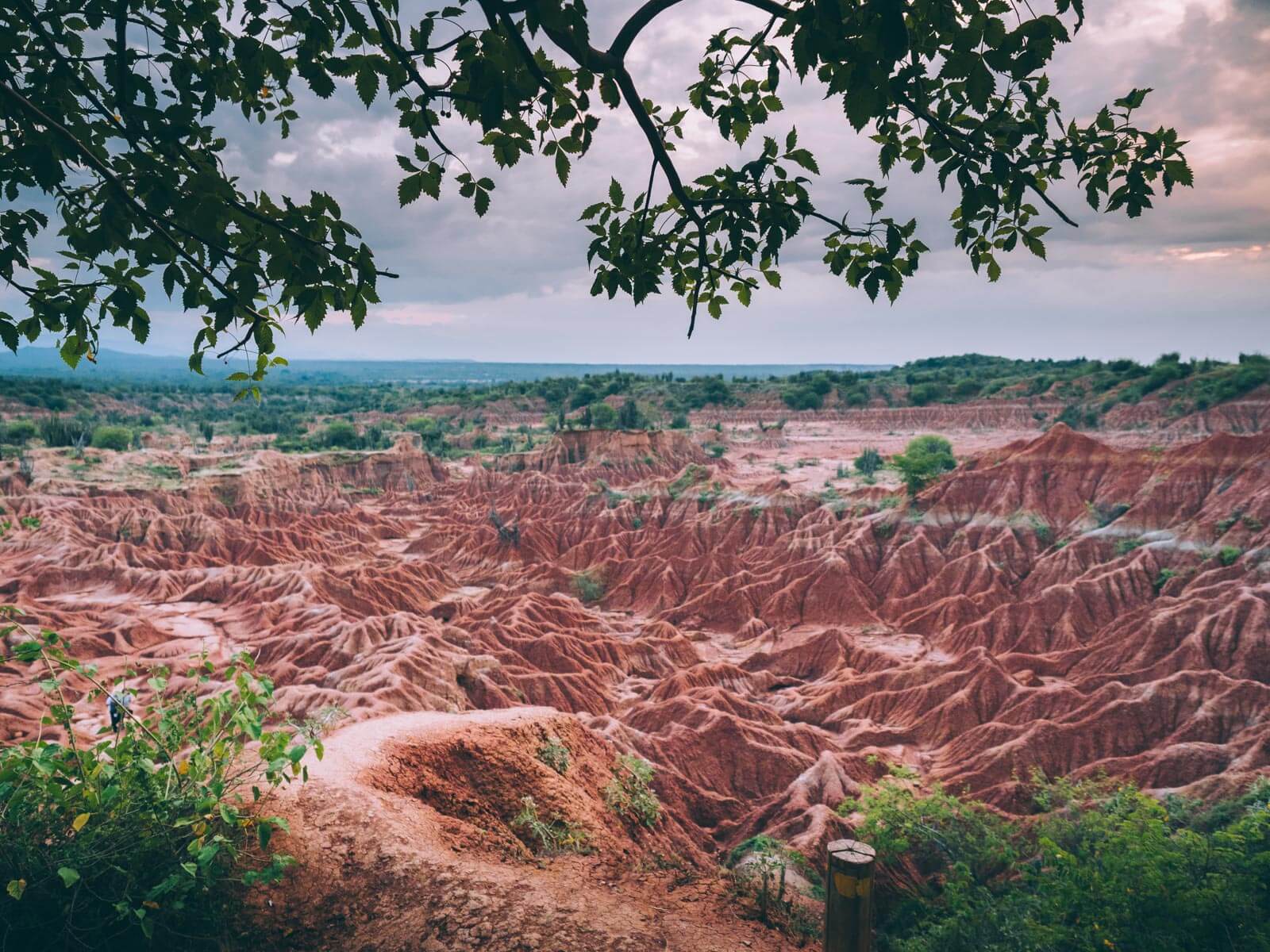
To visit the desert, we went to Neiva. We included a visit to Tatacoa in our itinerary for the southern route from Bogotá down to Cali via San Agustin and Popayan.
As we wished to continue the route southwards, we took a day trip between the grey and red deserts of the Tatacoa.
Villavieja
After meeting up with the group in Neiva, we set off by minibus for Villavieja, heading for the Tatacoa desert.
Arriving in the village, the local guide welcomes us and gives us a short introduction to the village of Villavieja, the Megatherium statue in the central square and a quick talk about the paleontological history of the Tatacoa area.
VILLAVIEJA
The small village of Villavieja is well worth a visit, with its narrow streets and typical colonial architecture. There’s a paleontological museum with over 600 exhibits bearing witness to the presence of gigantic prehistoric animals. You can also take a trip along the Rio Magdalena to discover the local wildlife.
Visit to the Grey Desert
After this brief introduction, we board the van and head for the Grey Desert.
The Grey Desert (Los Hoyos) is the furthest area from Villavieja, the idea being to start at the bottom of the desert and work our way back as the day progresses. The track is in poor condition, so you have to take your time, and the journey to the grey desert is relatively long (around 45 min).
For this excursion, we went as far as the Valle de los Xilopalos, where a 2-hour hike awaits us under the sun and in the terrible heat of the Tatacoa desert… bring your hats and water!
Please note that you can only hike the “Los Hoyos” part of the grey desert.
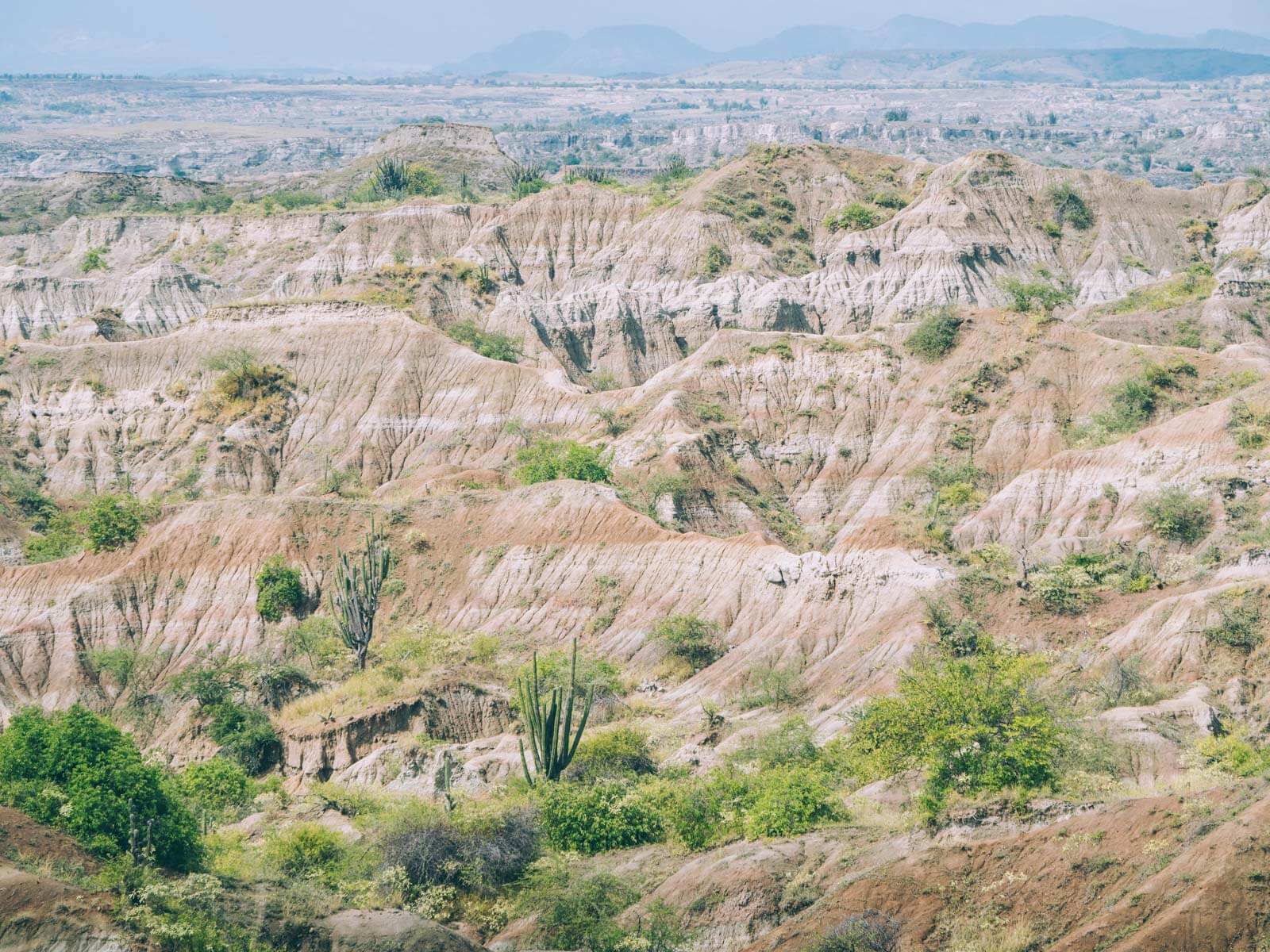
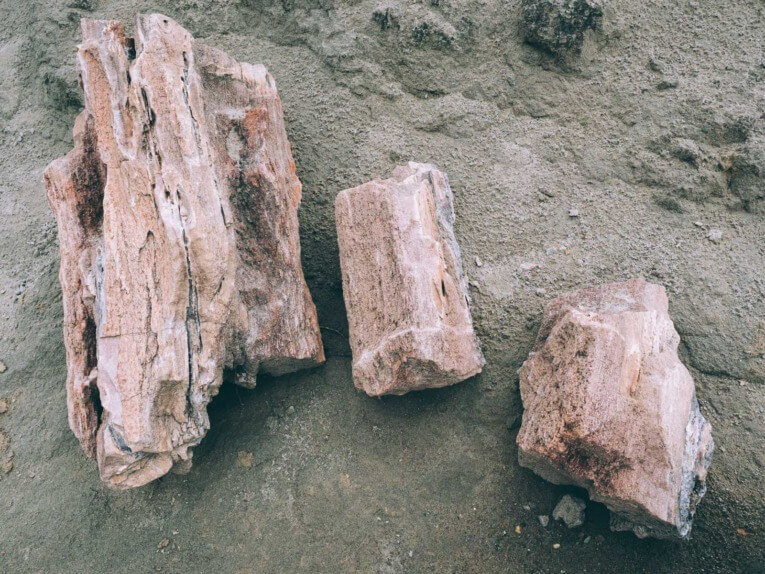
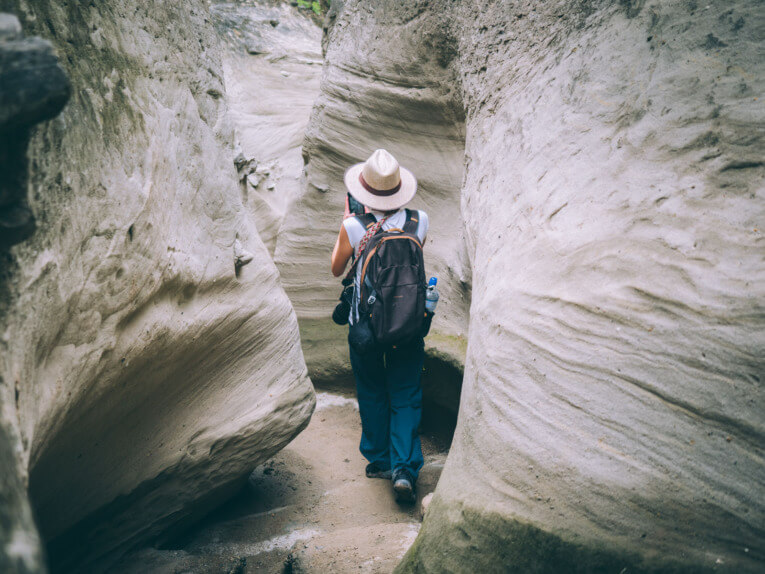
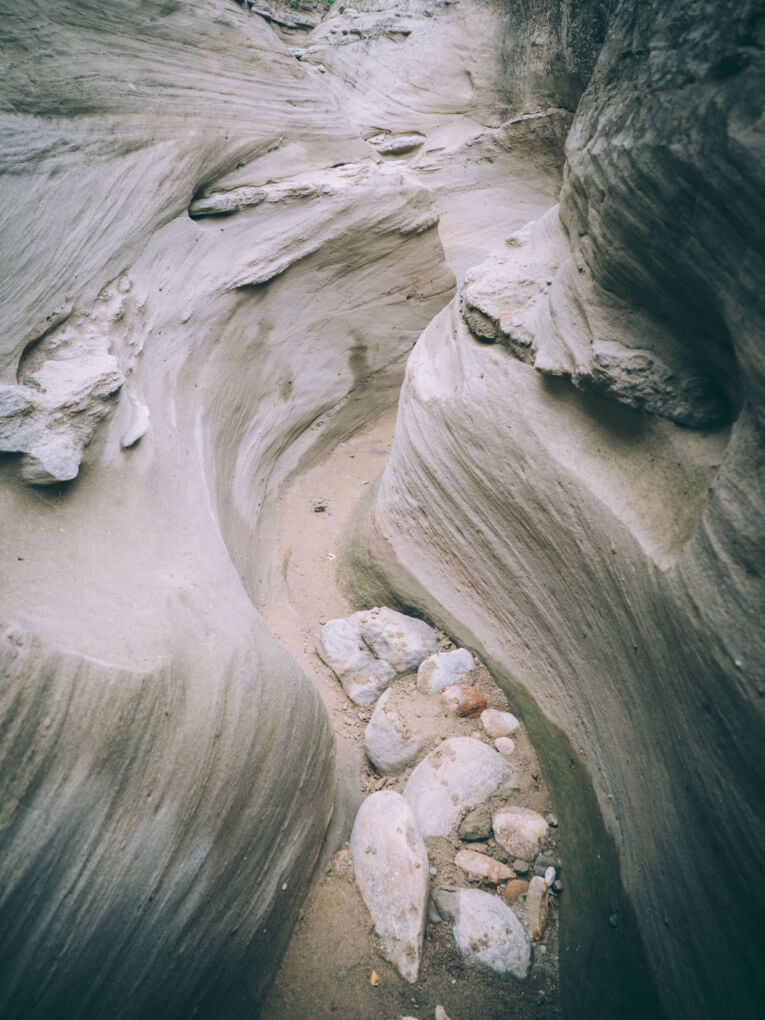
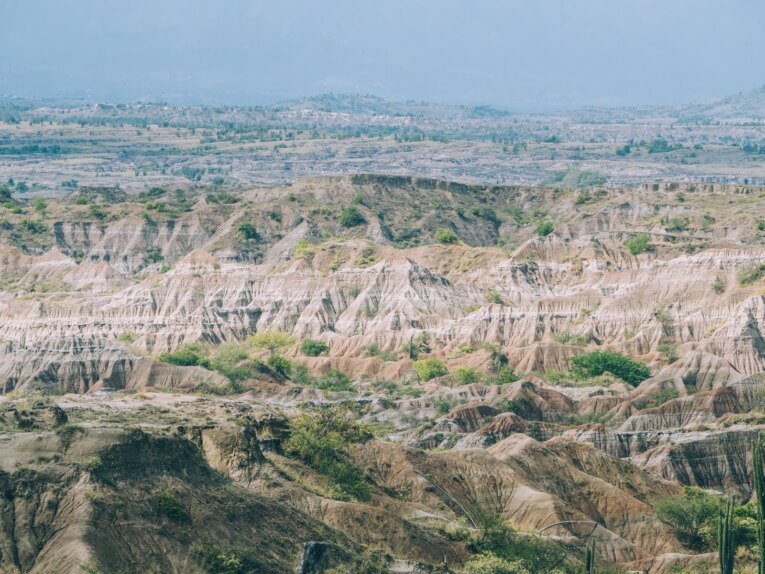
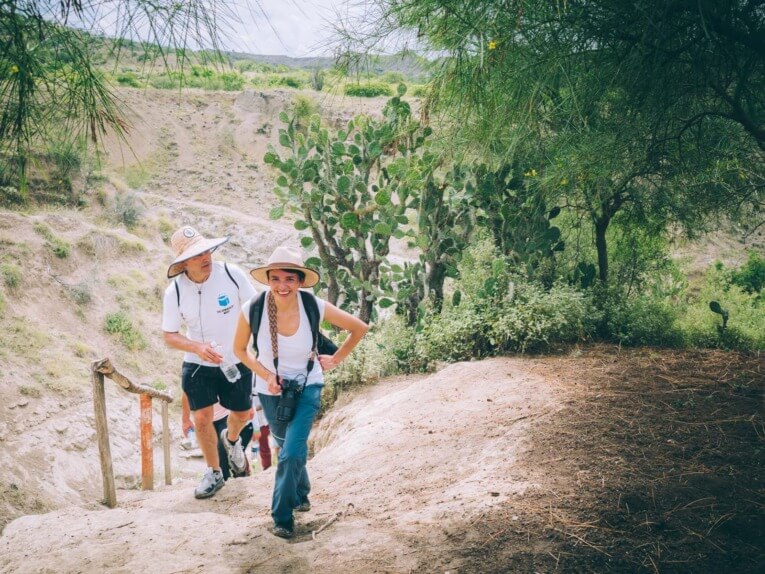
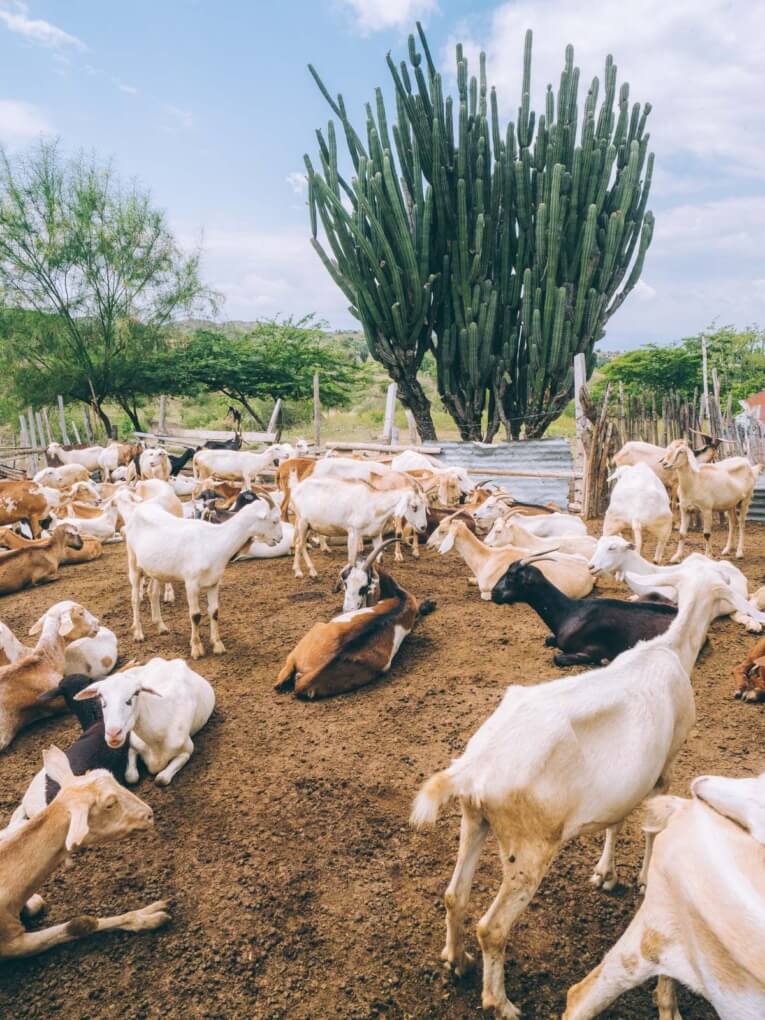
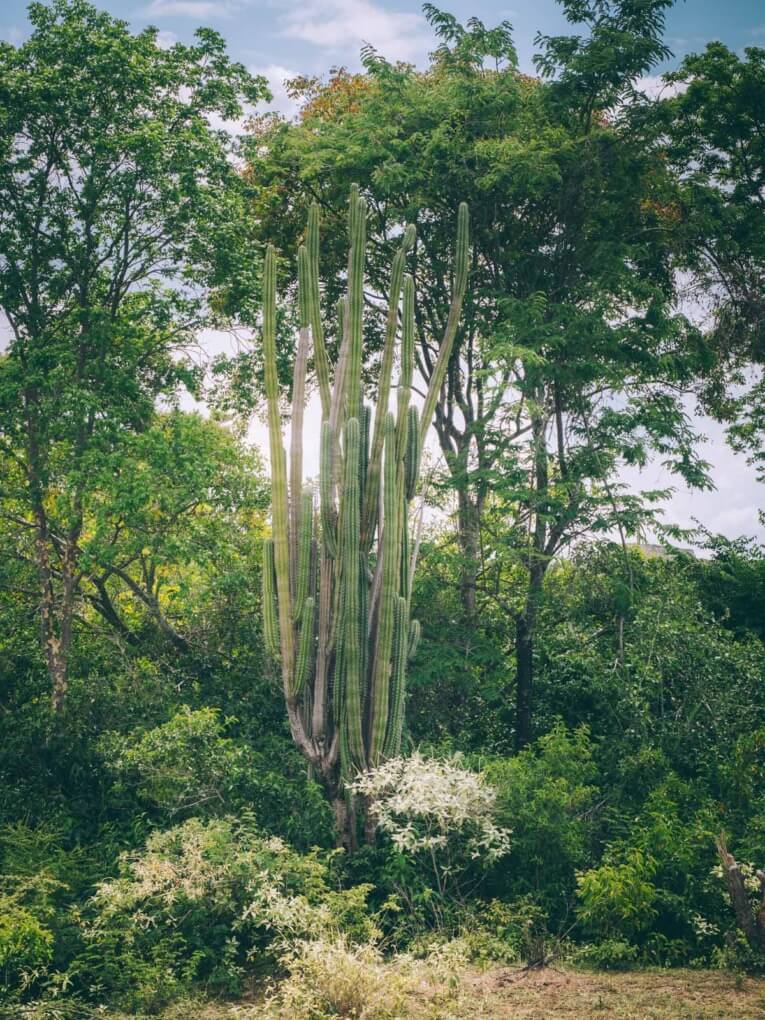
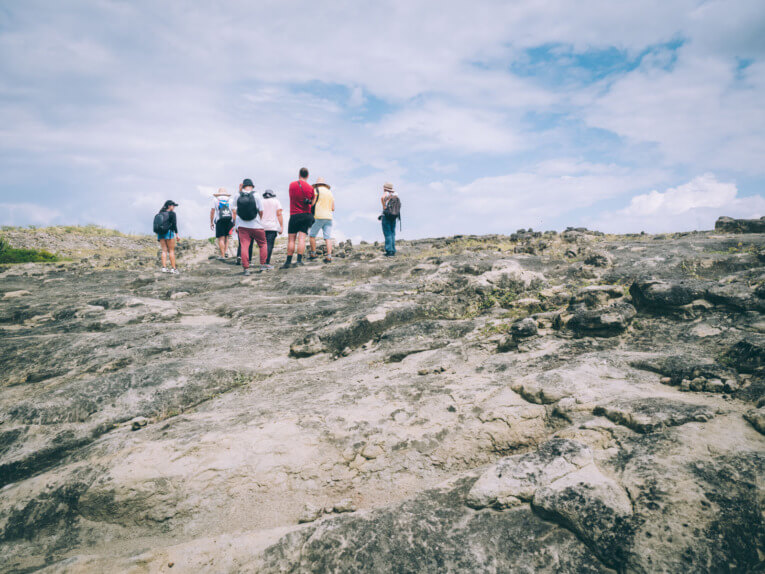
Valle de los Xilopalos takes its name from the remains of “petrified wood” that can be found along the trail. Along the way, dotted with rock formations sculpted by wind and erosion, we stop at the home of Doña Ligia, one of the oldest inhabitants of the Tatacoa desert. She survives here by raising goats and selling refreshments to passers-by.
We wind our way through narrow tunnels, the Paso de la serpiente, then the Paso de la señorita, where it is said that passing through recharges one’s energies, like a rebirth… it’s especially hot! and we’re starting to get hungry too, hehe!
It’s not advisable to do this part on your own; it’s better to take a guide who knows the trails well and can come to your aid if you feel uncomfortable due to the heat or dehydration.
OUR DAY tour FROM NEIVA
- Groups of 8 people
- Transport by minibus
- Departure from Neiva at 8:45 a.m
- 1-hour drive to Villavieja
- Visit to the Grey Desert
- Traditional lunch
- Swimming in the El Manantial pool.
- Visit to the Red Desert
- Star gazing
- Return to Neiva at 10 pm
Contact our local partner
For a day trip from Neiva to visit the Tatacoa Desert, we recommend the services of our local partner. They know the desert, the guides and the service like the back of their hand!
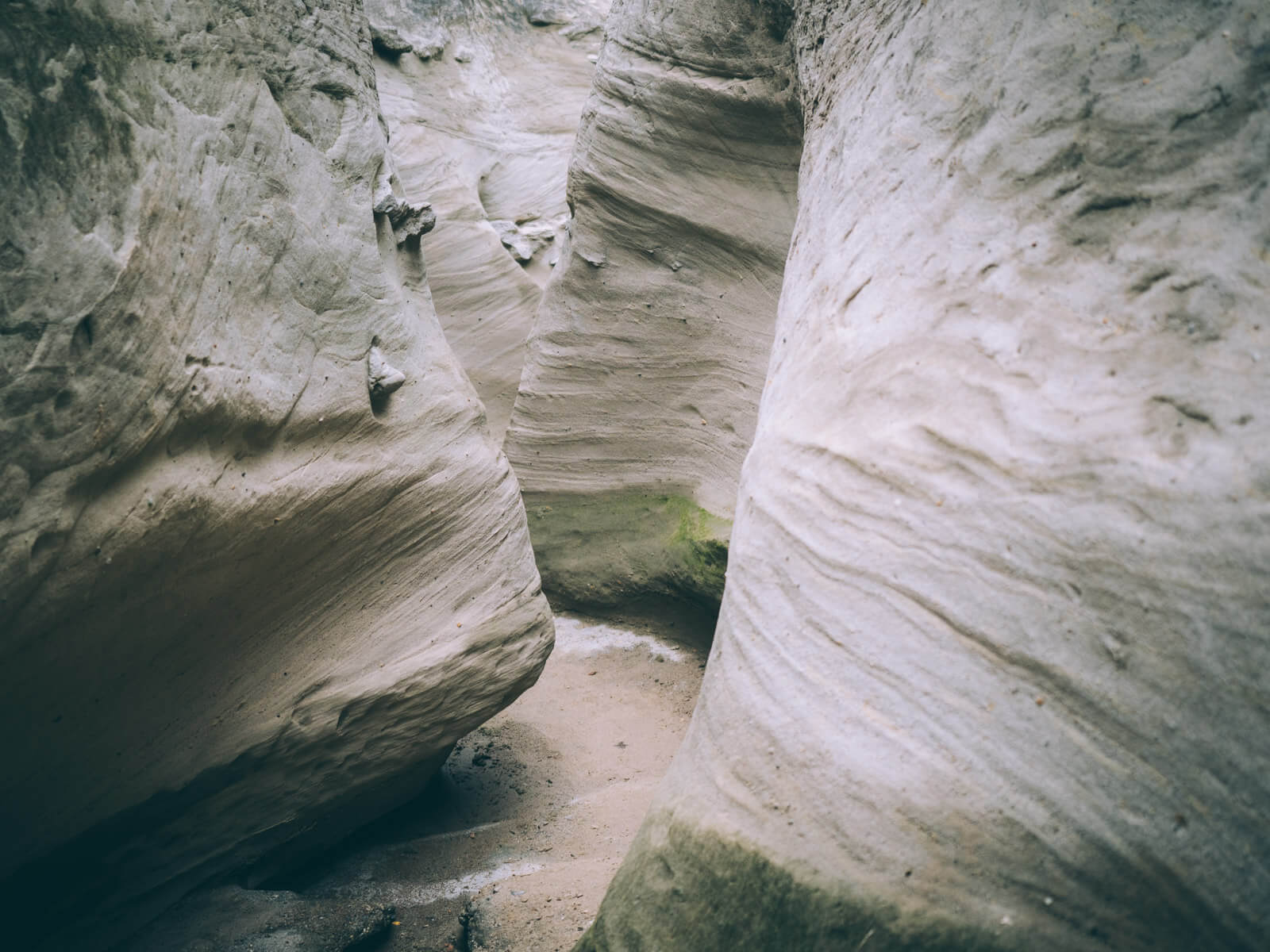
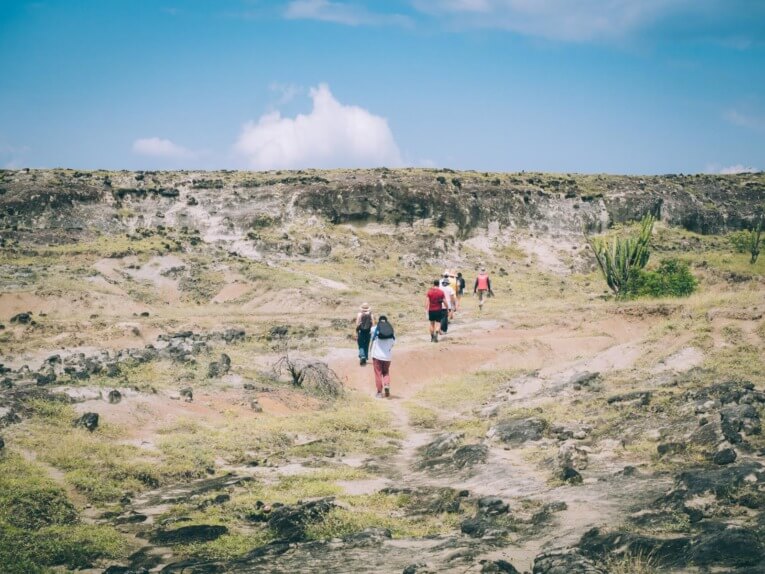
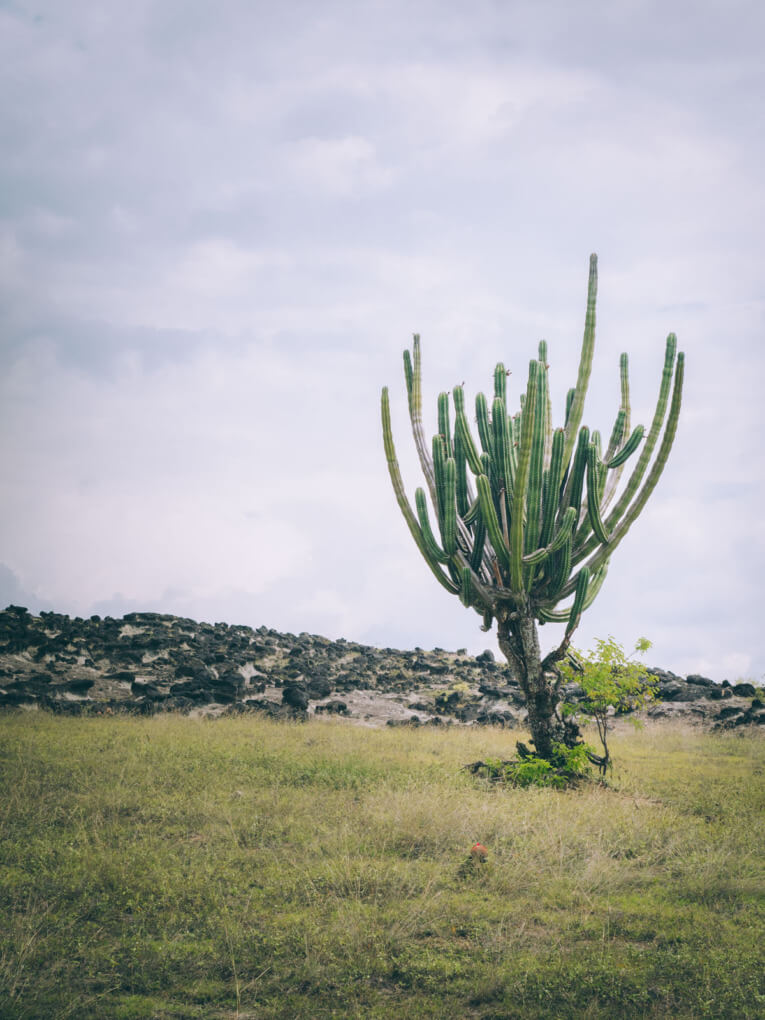
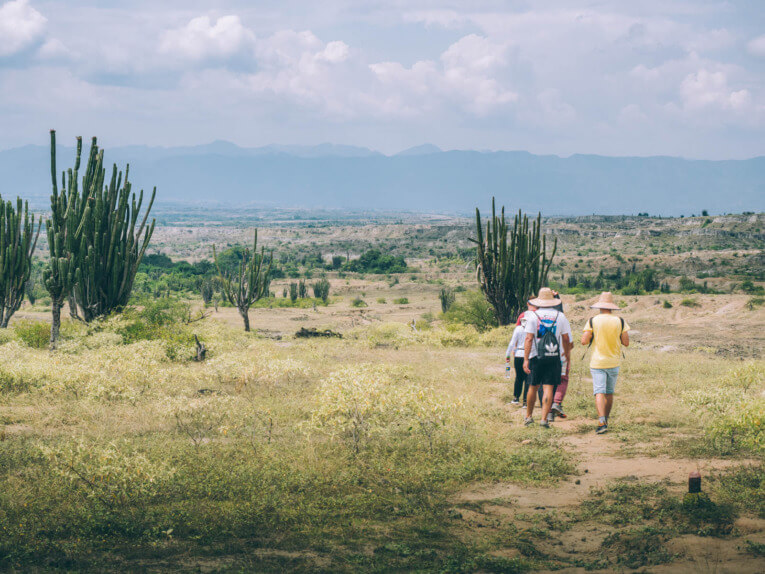
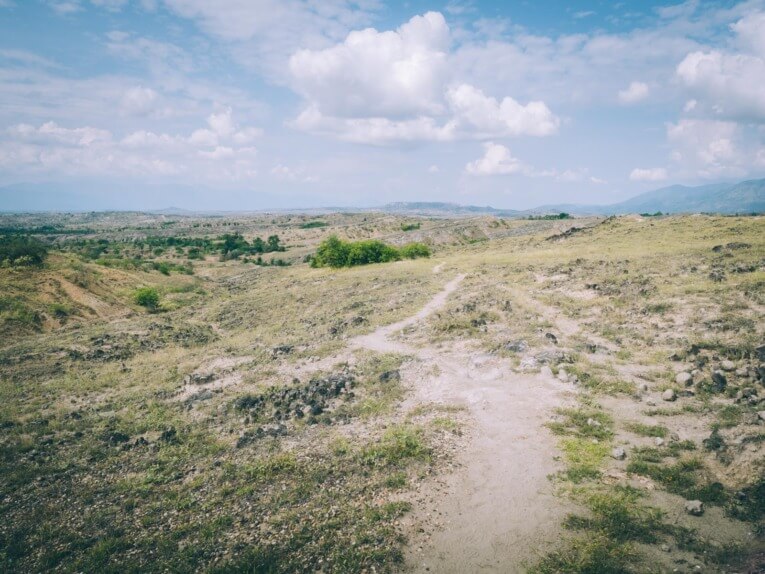

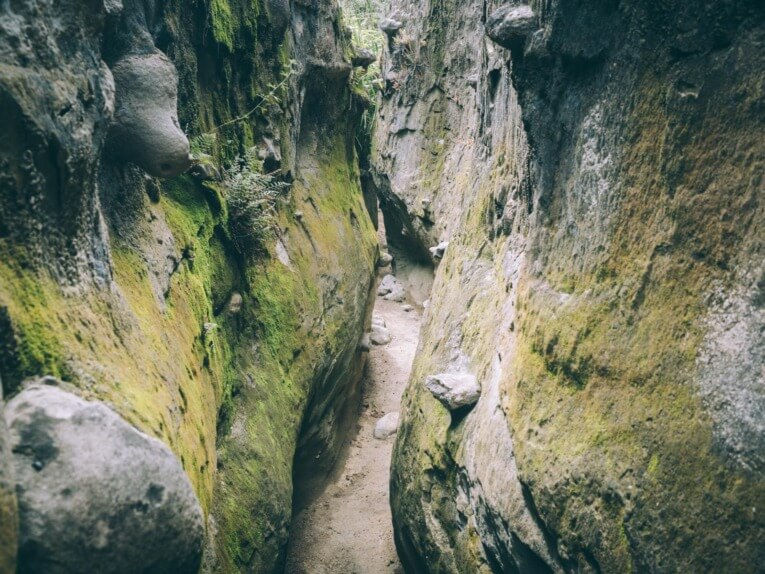
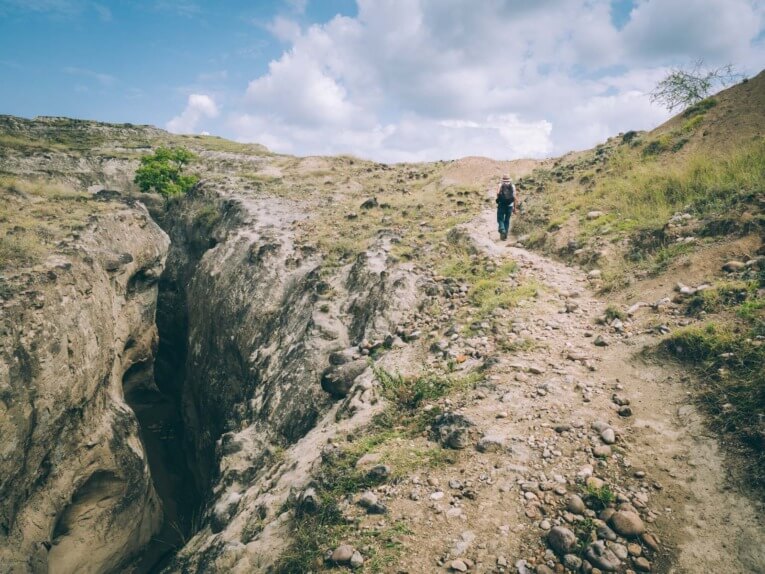
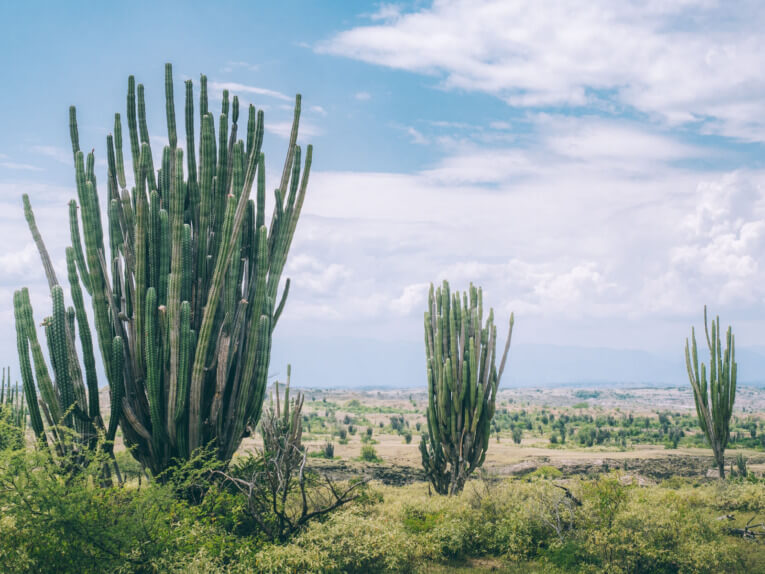
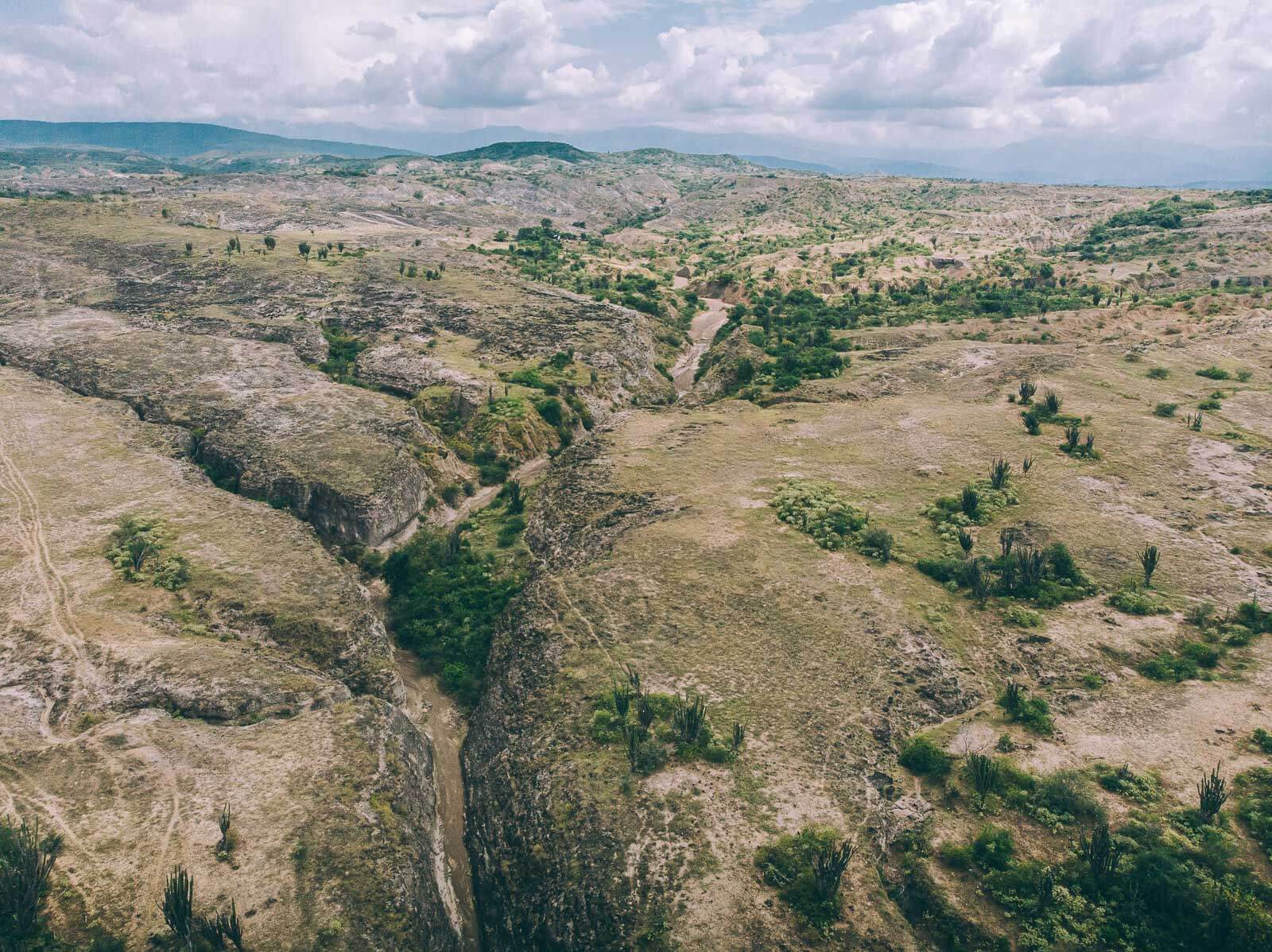
Swimming in a natural pool
Before continuing our day, we head for the finca where our lunch awaits. We were lucky enough to taste a very good Chivo stew, the local specialty. It was really good!
The finca offers pretty nice accommodation for those who want to stay overnight in the desert (you can ask our local partner about this option if you’re interested).
We set off with full bellies to recharge our batteries at the “El Manantial” natural pool.
There are four natural pools in the Tatacoa desert. The best-known is certainly “Los Hoyos“, but it’s been a victim of its own success and the wait to get back in is often interminable! ..
Fortunately, our guide knows all the tricks of the trade and takes us to a pool that’s a little less well-known and therefore a lot less crowded: El Manatial! The place is nice and quiet, and the refreshment is very welcome in this heat! A delight that prepares us for the rest of this rather intense day!
WHAT DO YOU MEAN, SWIMMING POOLS IN THE DESERT?
We were always surprised, even a little shocked, to learn that there were swimming pools in the Tatacoa desert. But, in reality, what might seem like an environmental folly can be explained quite simply.
The desert has streams and underground springs, and at certain strategic points the springs are outcrops, and landowners divert the course of the water to fill natural pools.
The diverted water returns to the land in a constant flow, like a kind of dam.
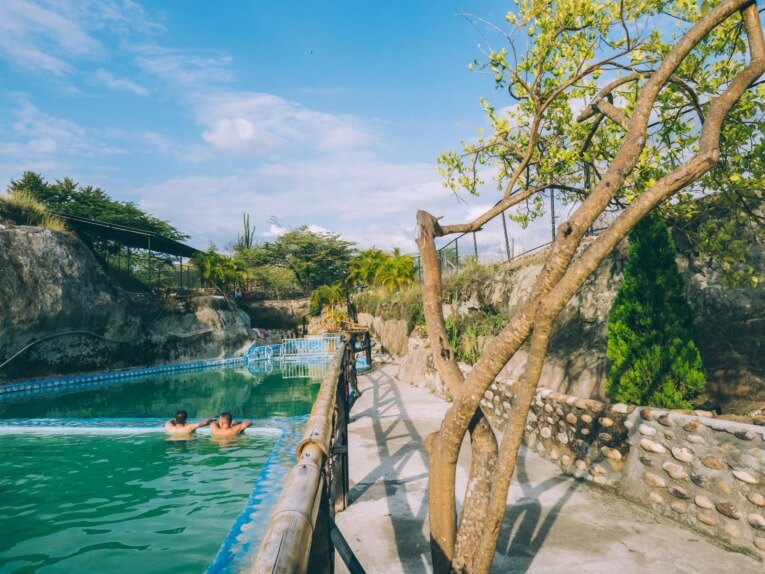
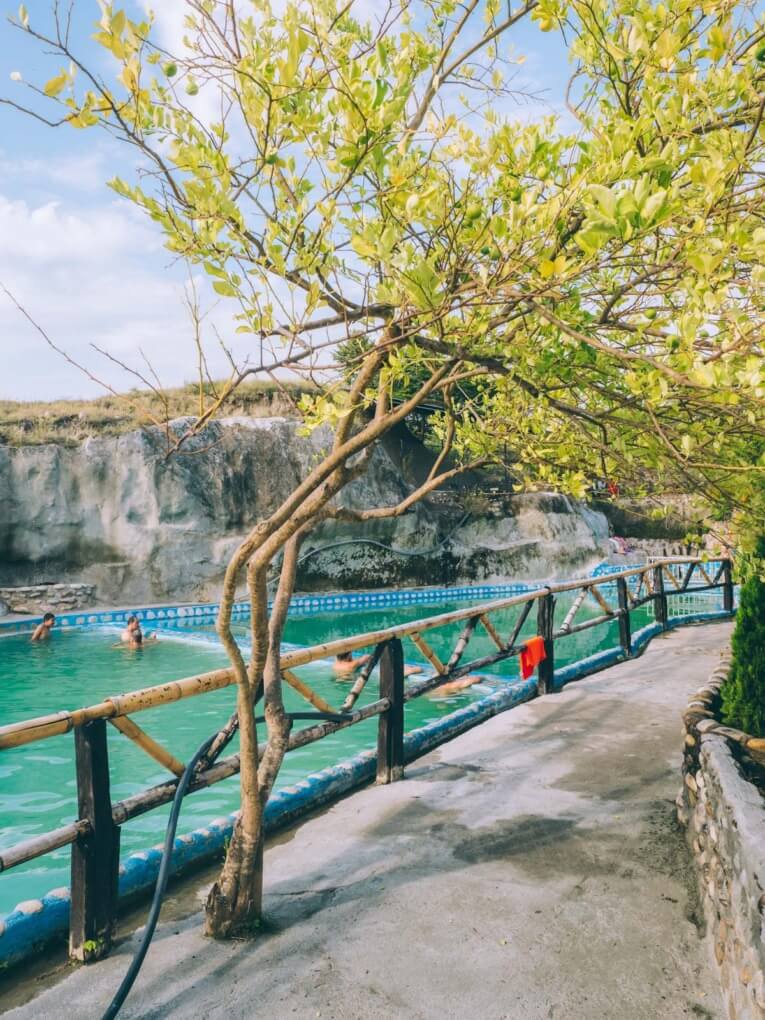
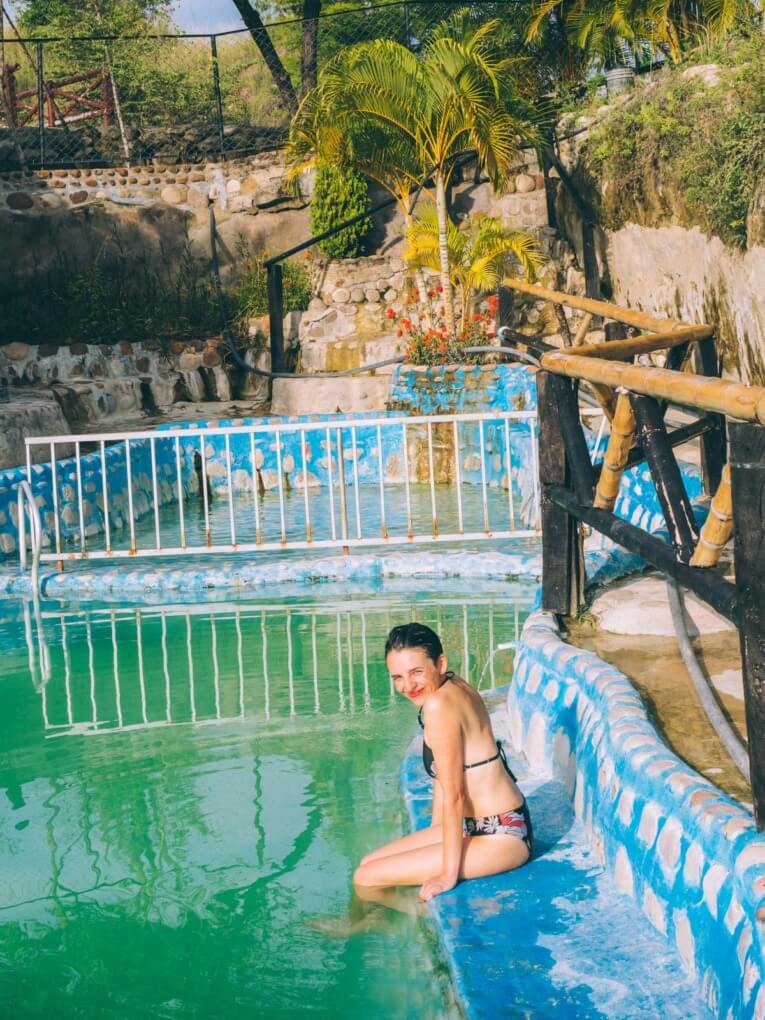
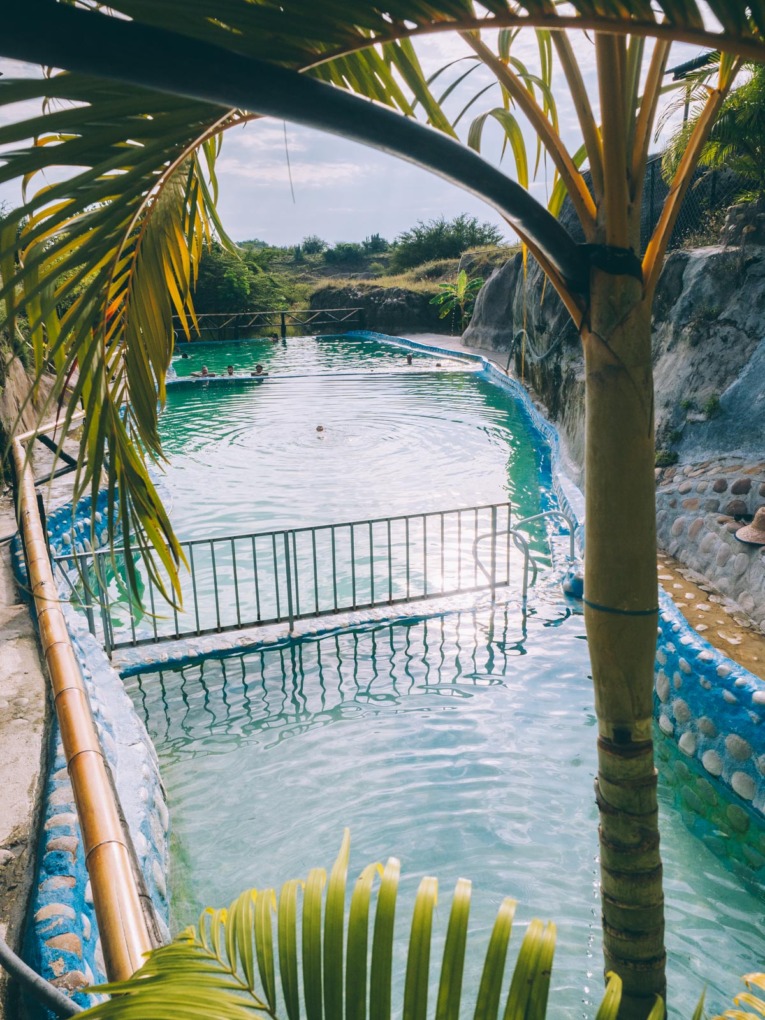
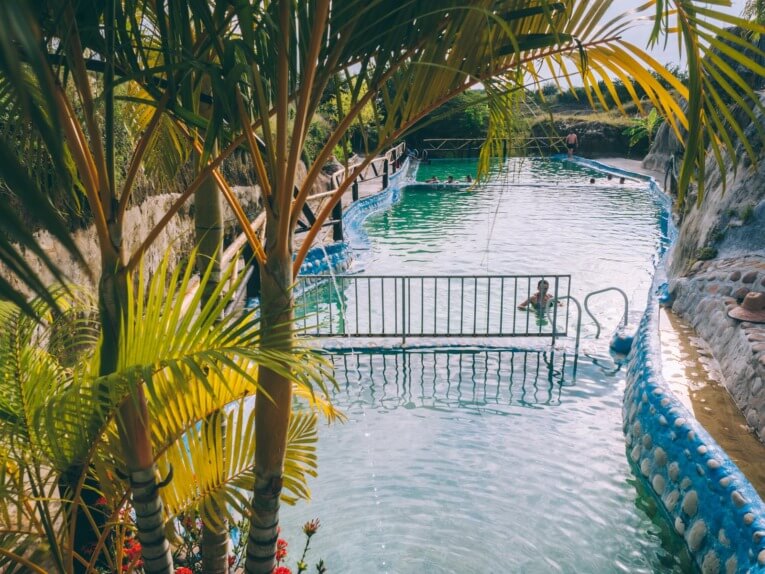
Visit to the Red Desert
After a swim, we set off again for the “El Cuzco” area and its red desert. This is the highlight of the show! Arriving at the site, the view is already spectacular. The red color is impressive, and the rock formations are magnificent.
We descend into this new labyrinth accompanied by our guide, who again makes sure we respect the path so as not to damage this fragile site, and tells us lots of interesting things.
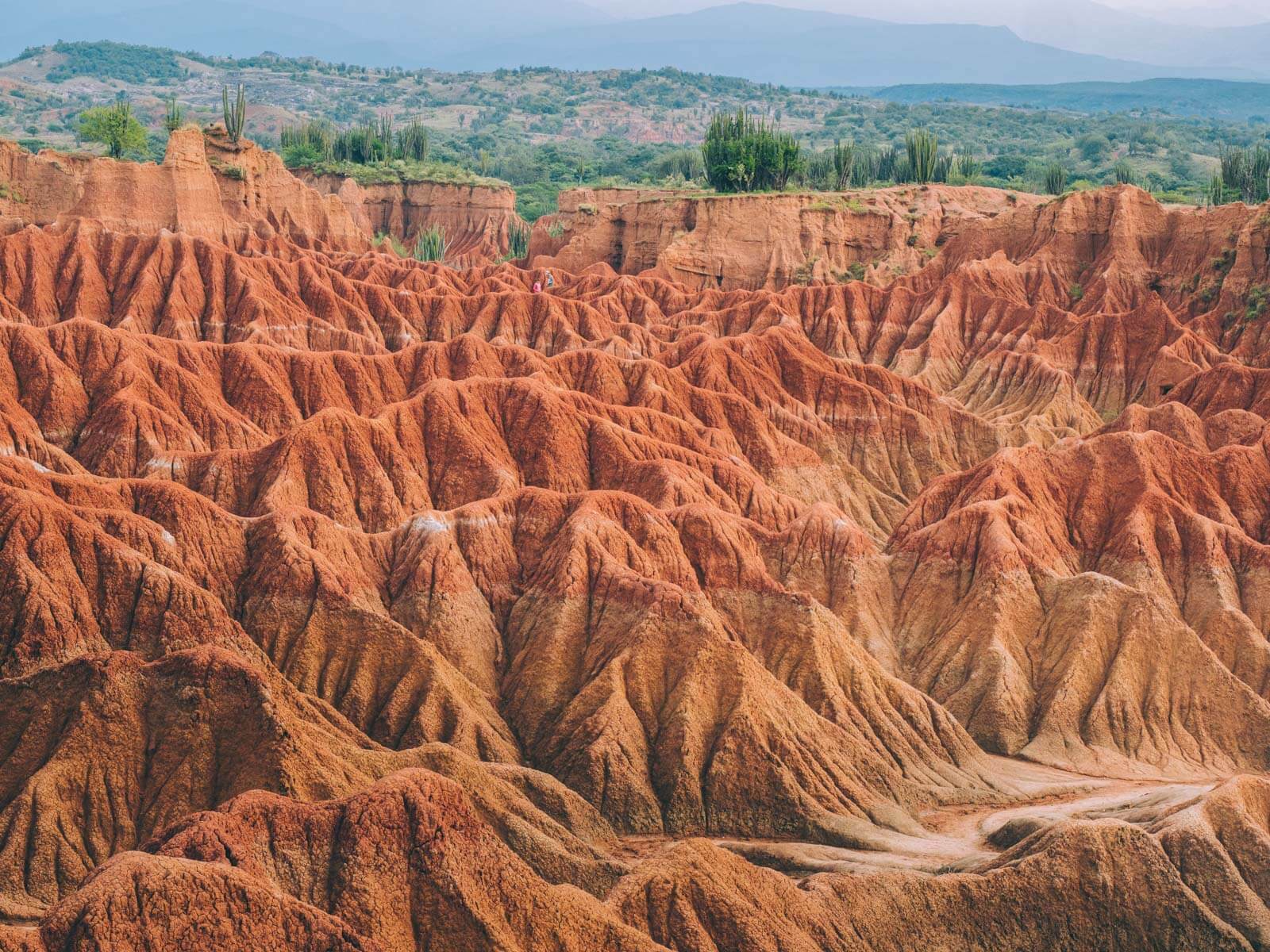
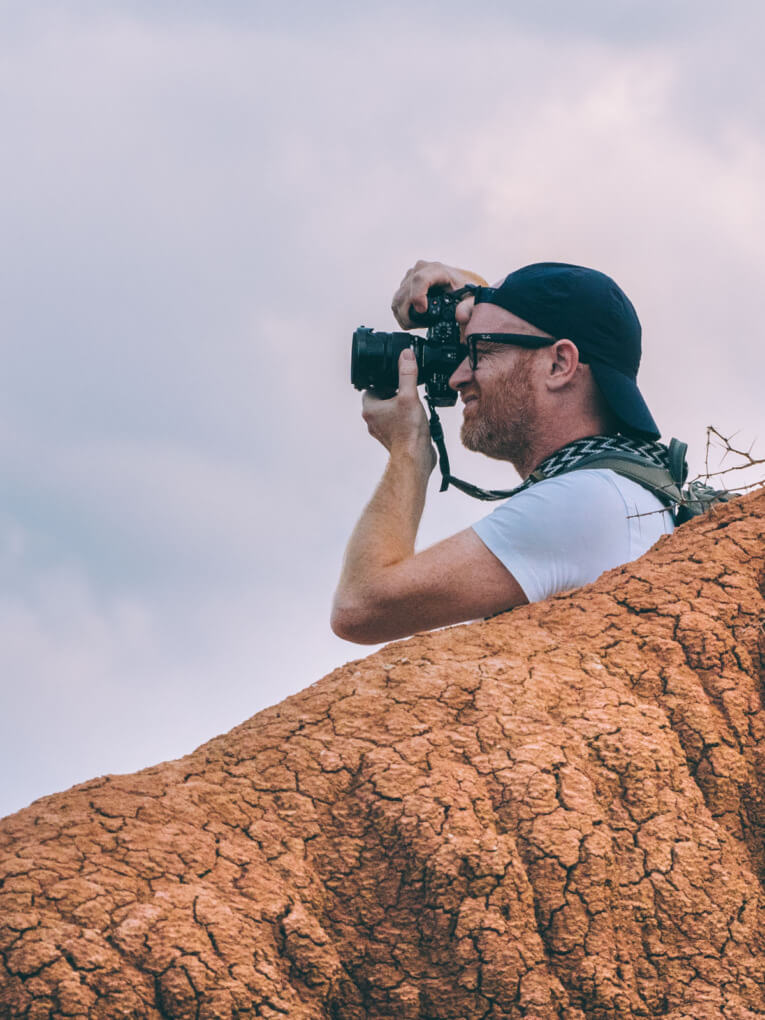
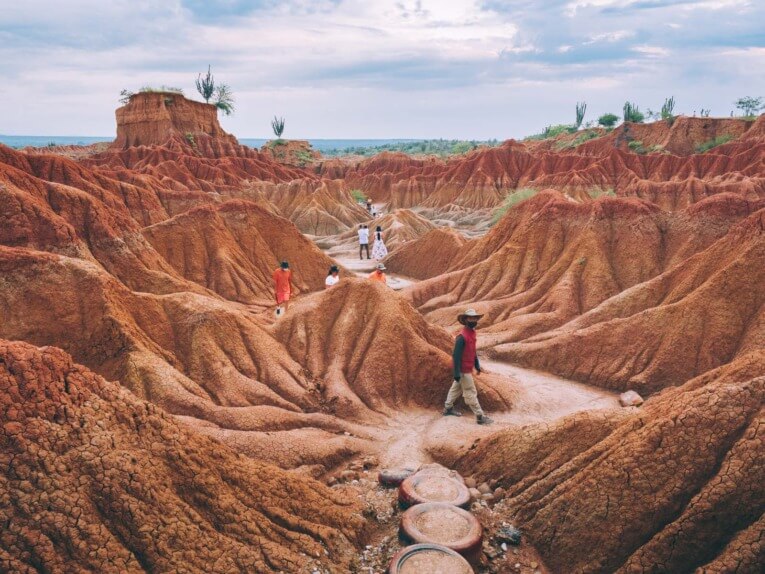
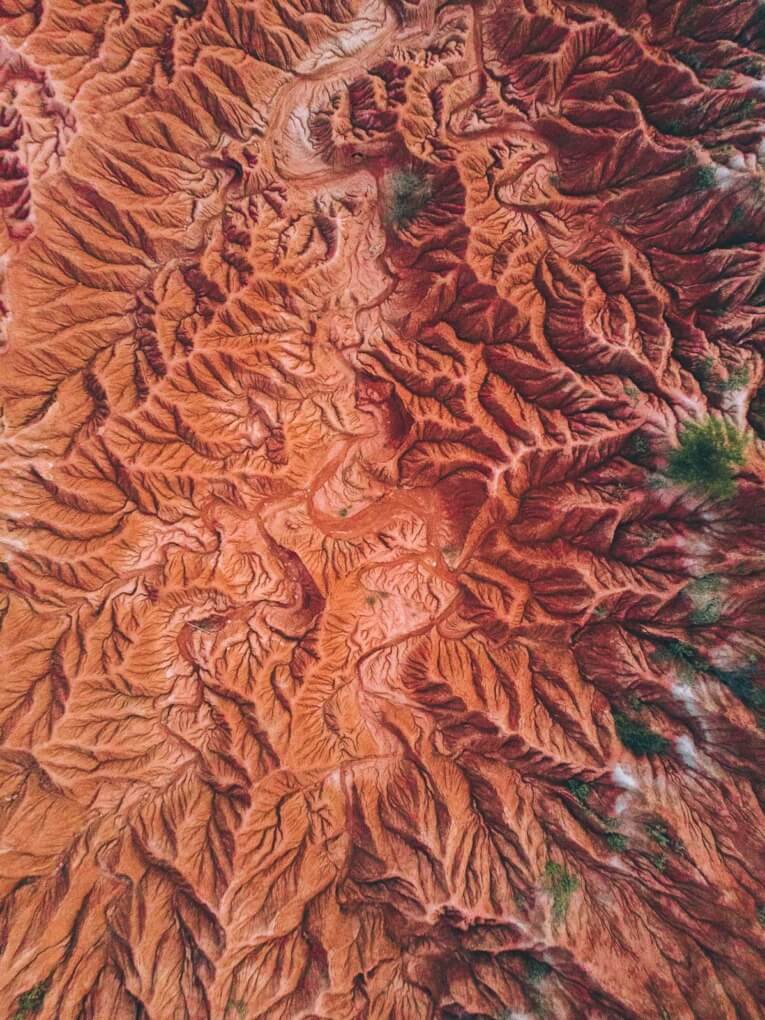
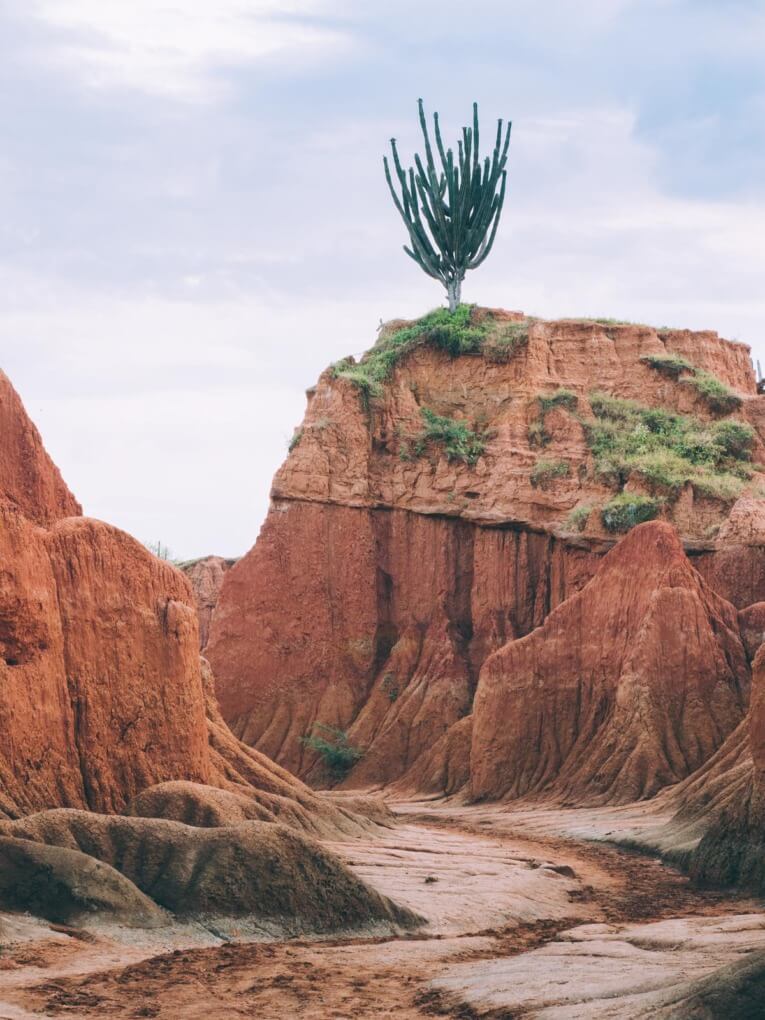
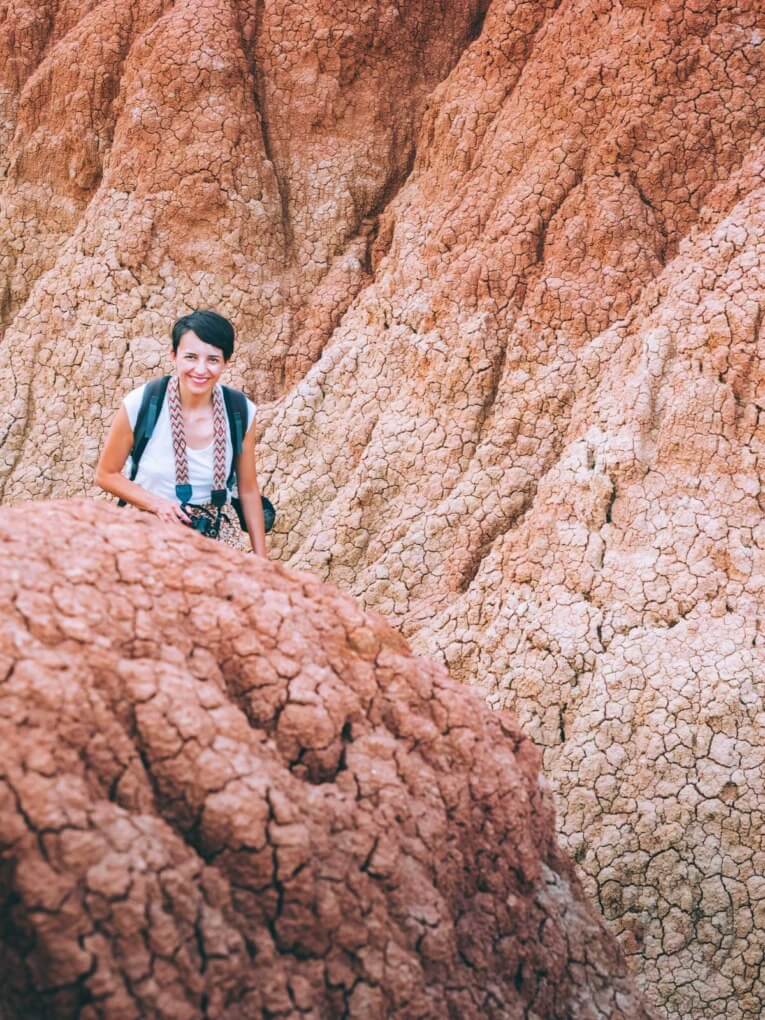
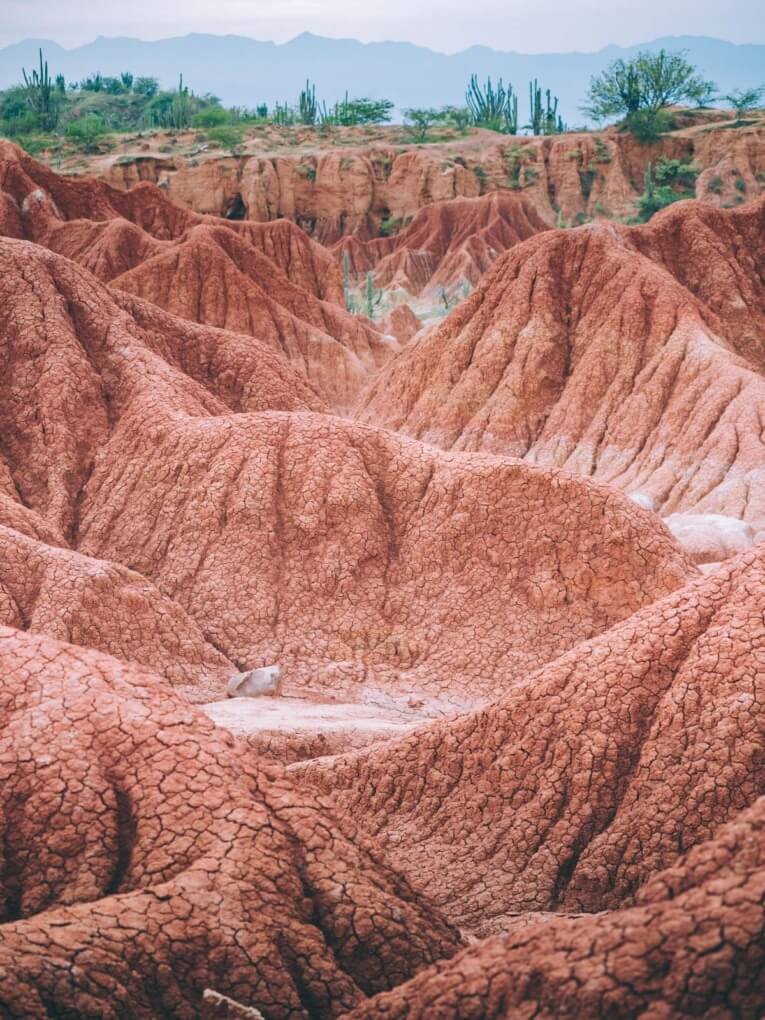
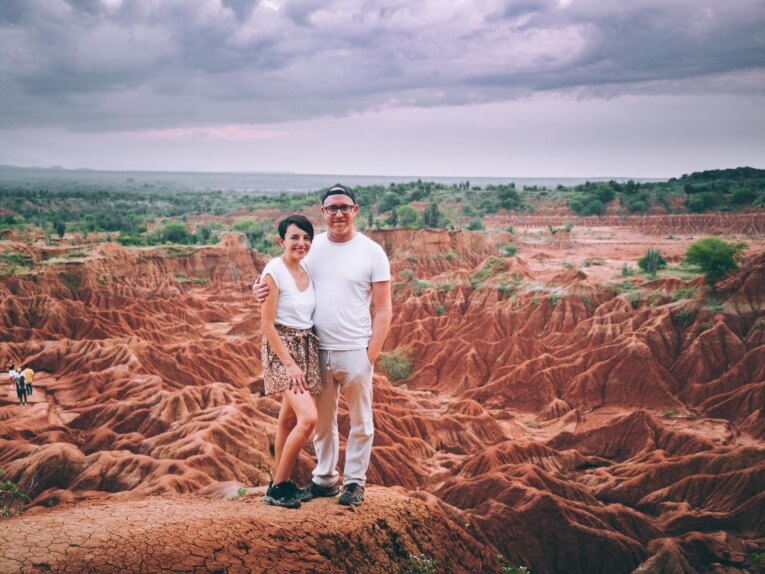
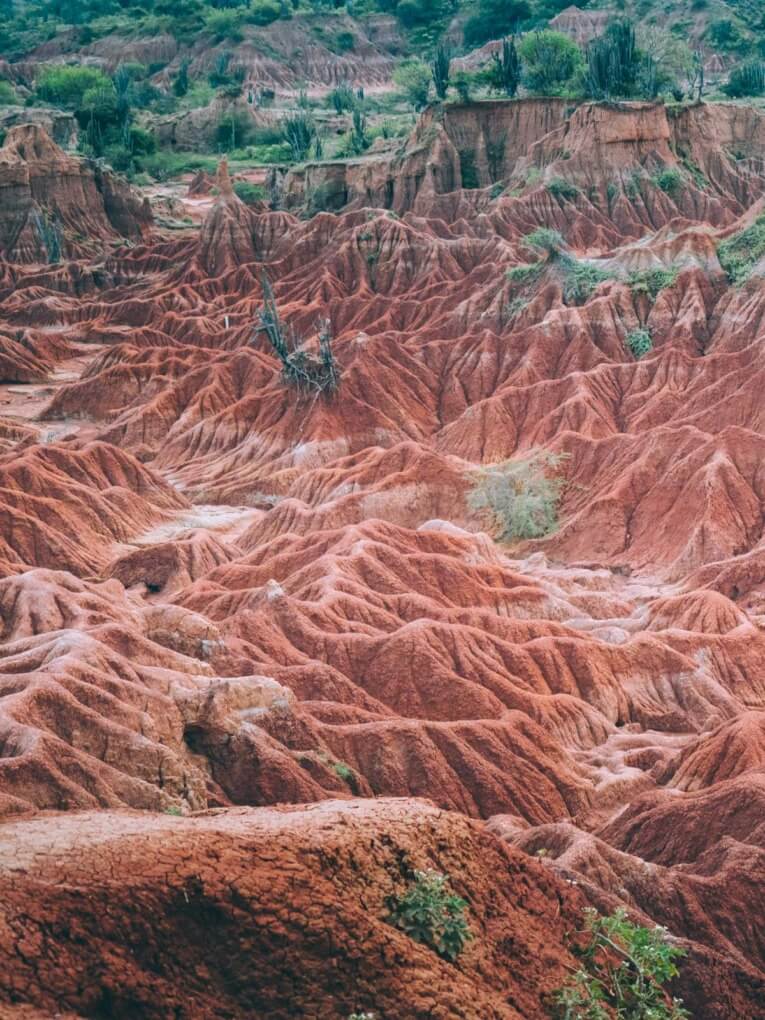
Its red color is due to the minerals that make up the earth (Iron, Phosphorus, Calcium). Our guide tells us that the name Cuzco in the indigenous language means the middle of everything, something “very beautiful”. And that it’s called “Labyrinth” because it has several entrances and is easy to get lost in.
It’s probably the most photogenic site in the Tatacoa desert. The hike is much less strenuous, shorter, cooler and more enjoyable.
We finish at the mirador of the red desert with a cool drink as we wait for the sun to set. But the sky has decided to become overcast today, so the show’s over!
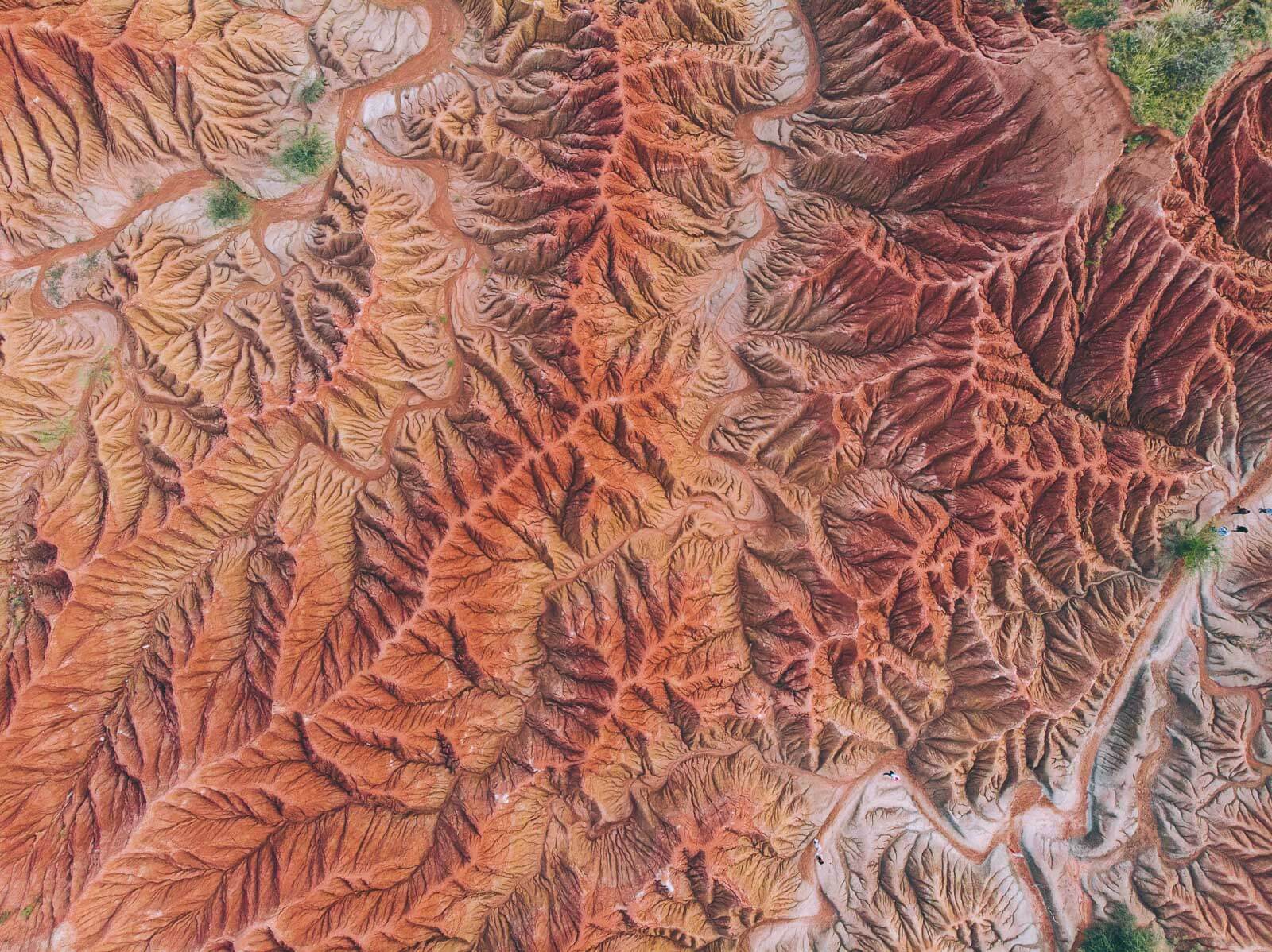
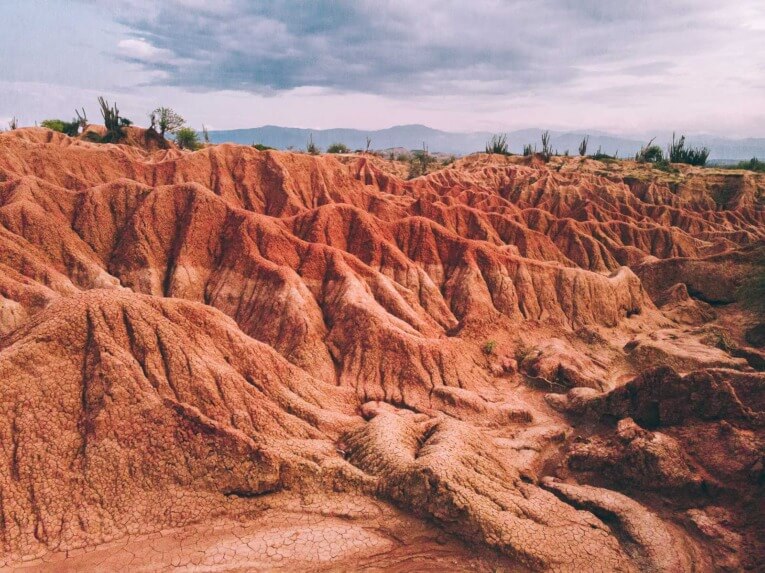
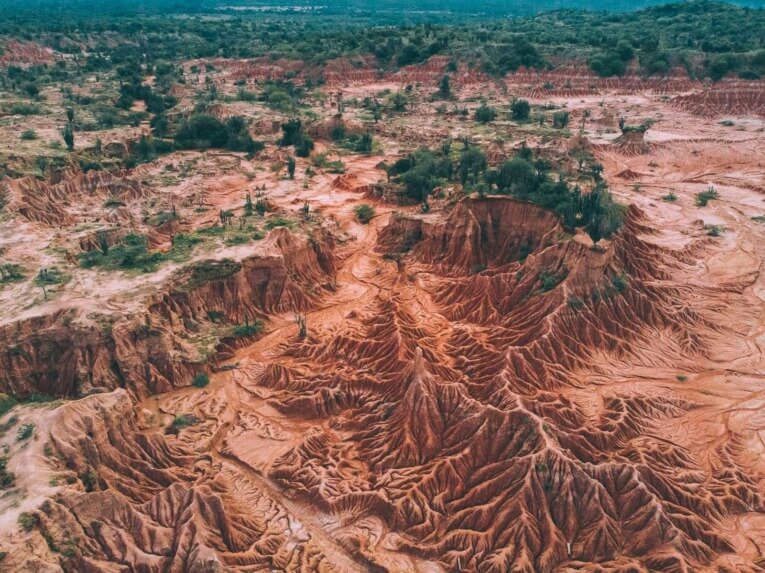
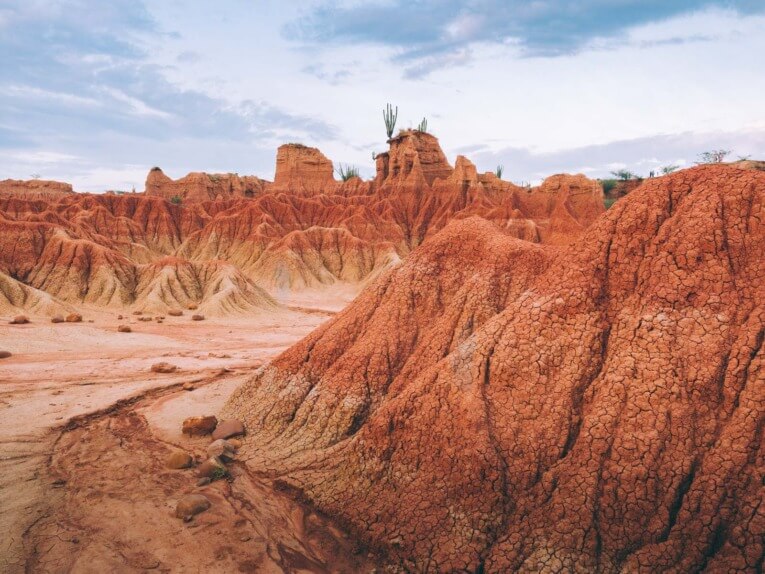
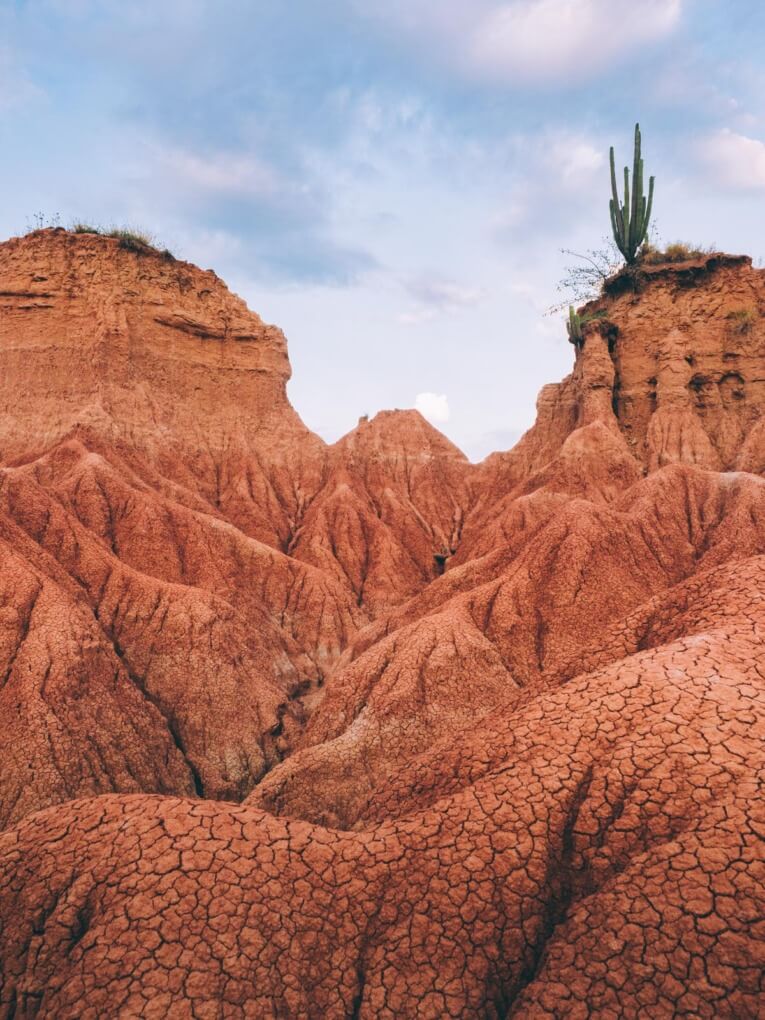
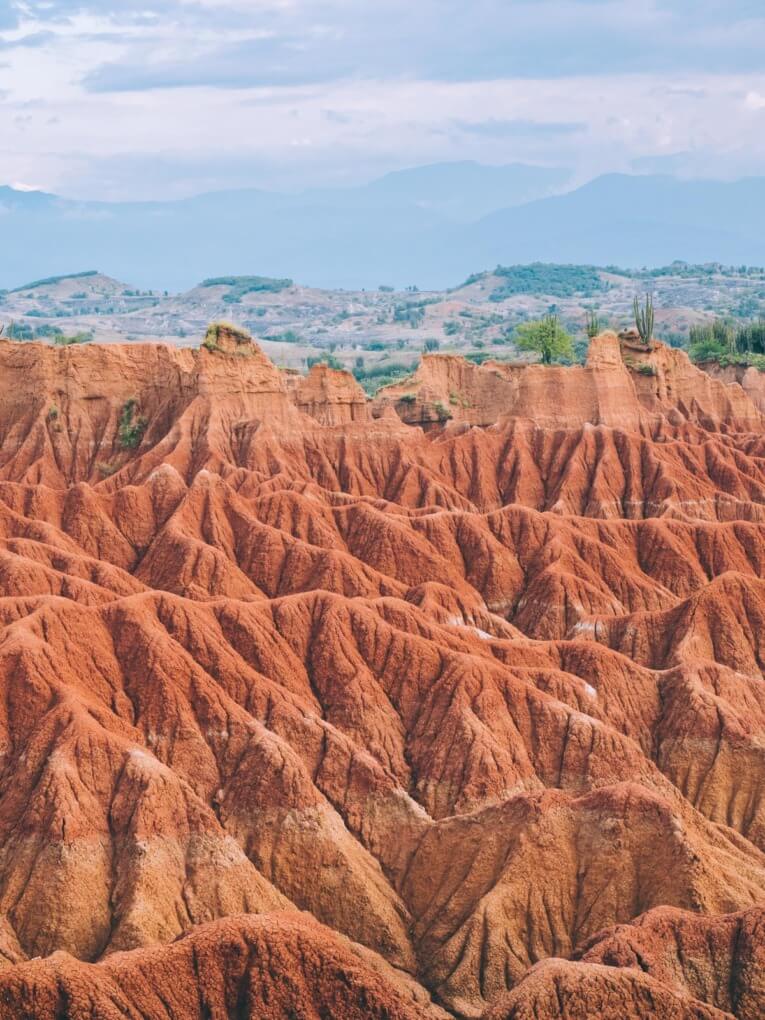
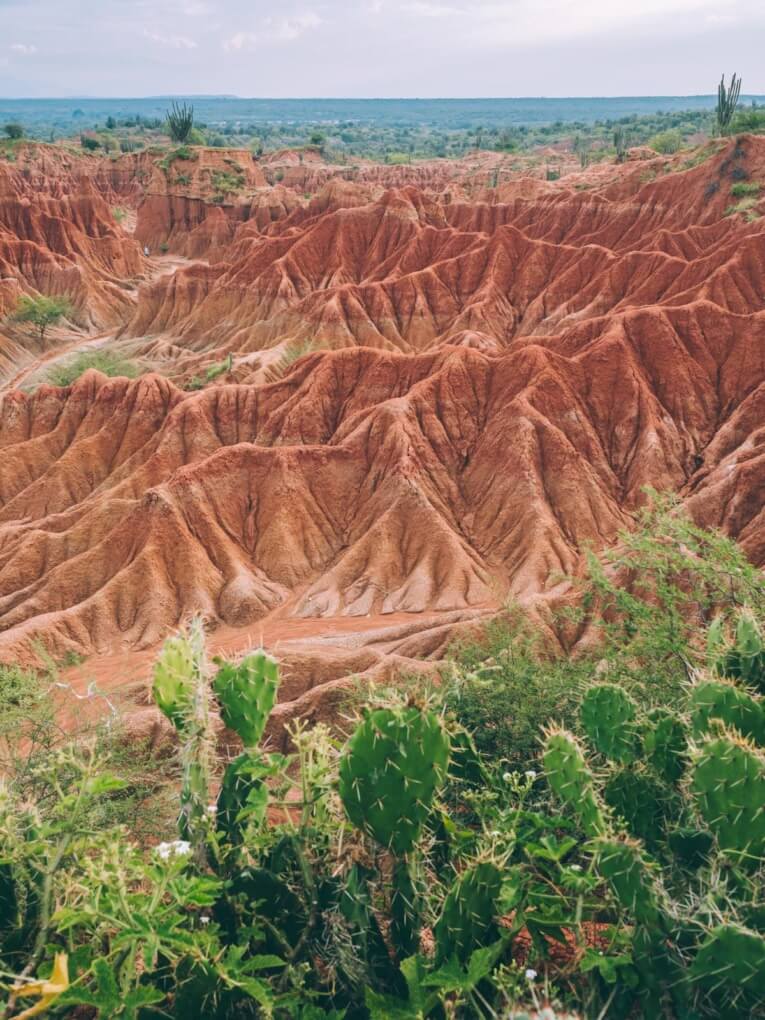
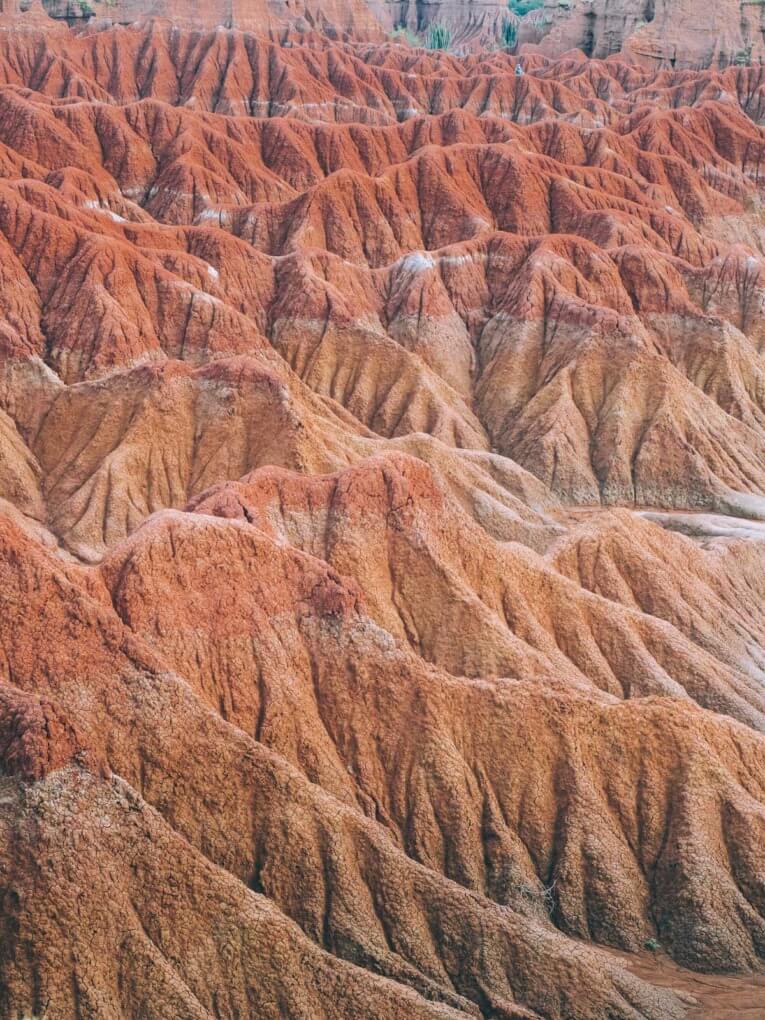
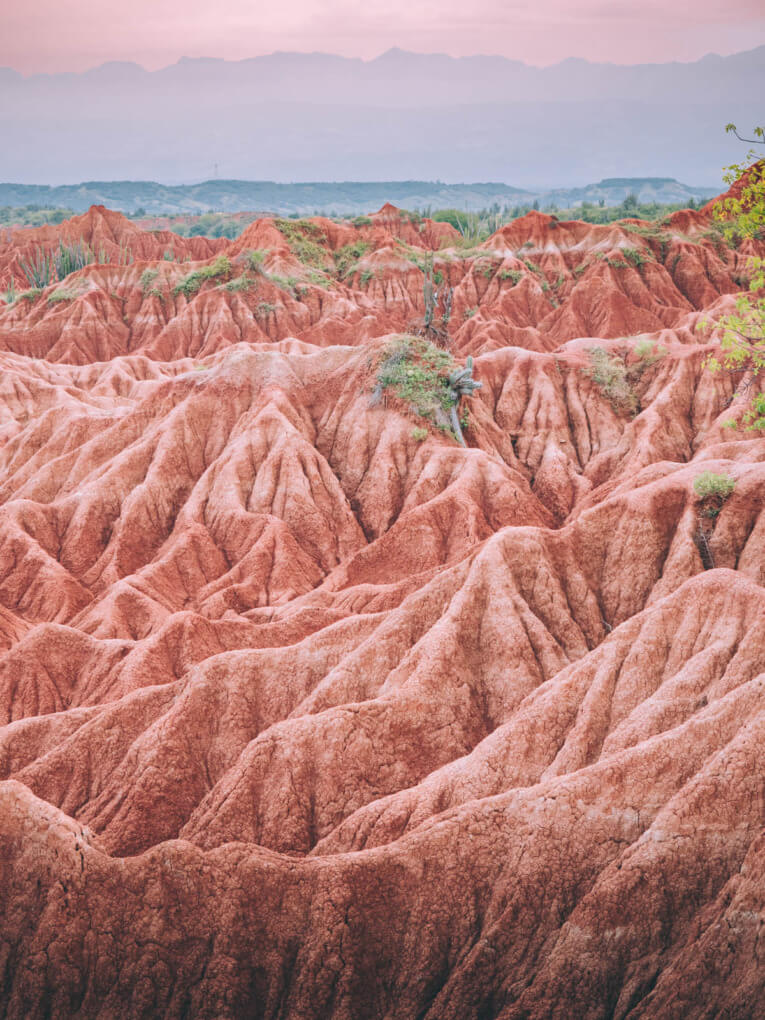
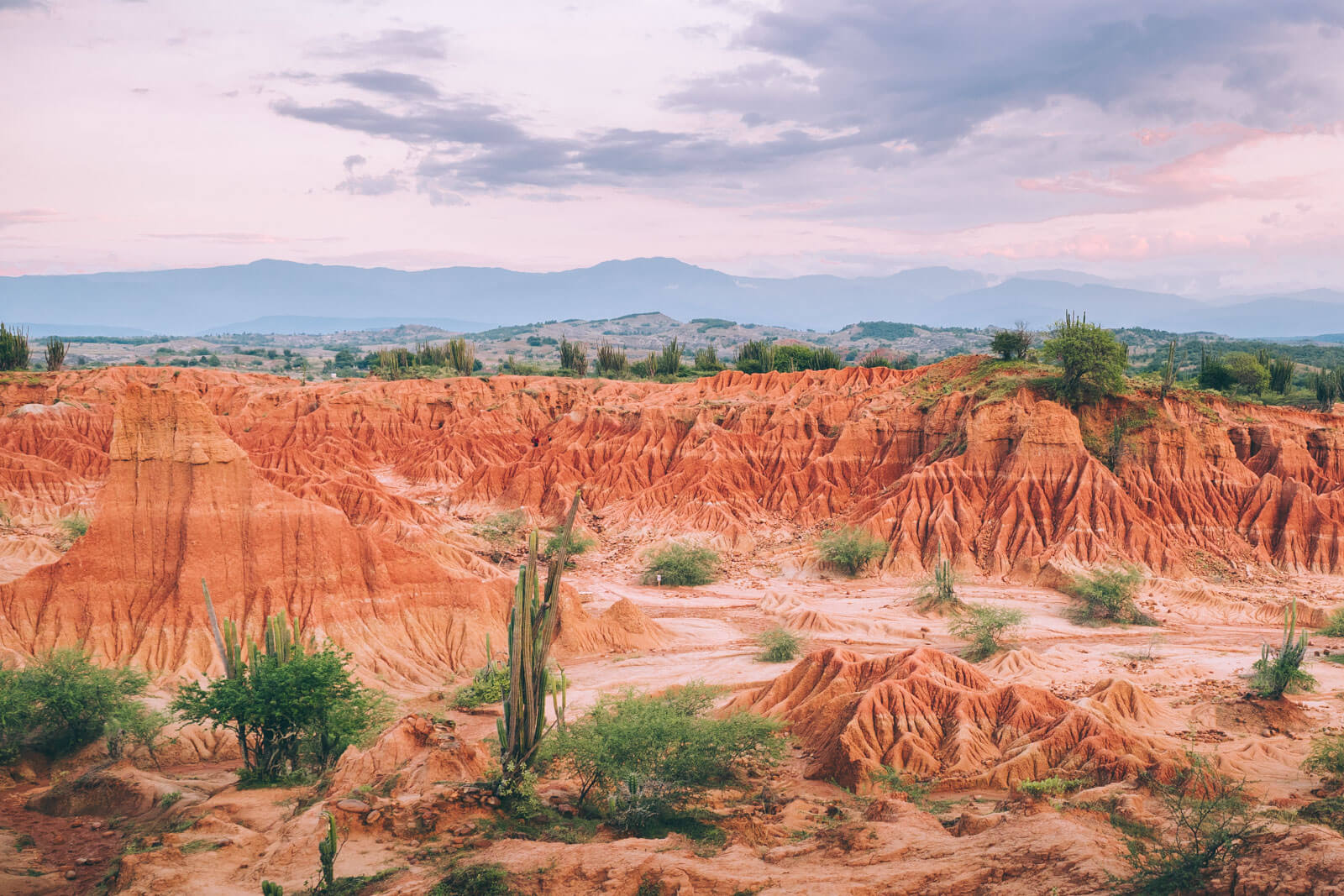
ALTERNATIVE: 2 DAYS trip AT TATACOA FROM BOGOTA A/R
For those wishing to visit the desert as a group from Bogota and back, we recommend you book the 2-day excursion to the Tatacoa desert with our local partner in Bogota.
Services included
- Round-trip group transportation from Bogota
- Local Spanish-speaking guide
- All meals
- Lodging inside the desert
- Insurance
Activities included
- River Magdalena cruise
- Visit to Villavieja
- Hiking in the Red Desert
- Star-gazing entrance
- Grey desert hike
Stargazing
To round off the day, we’re taken to one of the “observatories” in the Tatacoa desert, renowned for its exceptional starry skies. We have the choice of doing the activity or not, as the entrance fee is not included in the price of the excursion proposed by our local partner.
On this particular evening, the sky is overcast and we know it’s not a good night for stargazing, but for you, dear readers, we decide to take part anyway.
But beware! Don’t expect a real observatory with its mega telescope. It’s simply an enclosed space where an astronomy enthusiast will teach us how to find our way around the sky and observe the stars. There are several observatories in the desert, and the guides don’t always go to the same place. Depending on the place, it’s pretty well done and educational!
Conclusion: is this an essential part of a trip to Colombia?
On our way back to Neiva, it’s time to take stock. It’s been a really intense day, and admittedly a bit long! The Tatacoa desert offers some truly spectacular scenery and is clearly a destination we’d recommend visiting. Tatacoa is one of the must-sees on any trip to Colombia, and it’s easy to see why.
We’re pretty exhausted, but we leave with a lot of images in our heads. Perhaps we could have done the tour over two days, sleeping inside the park, to take more time.
However, we’re delighted to have had a tour and to have been accompanied by a local guide to benefit from his information and knowledge and his good humor! He was really super attentive to everyone during the whole tour.
We’re also thinking that this is a plan that can easily be done over a weekend from Bogotá, for those who don’t intend to continue on to San Agustin or Popayan.
How to visit the Tatacoa Desert
There are many ways to visit Tatacoa. If you want to hike inside the labyrinths, we advise you to take a guide, for safety reasons and to support the local economy. Also because you’ll learn a lot of interesting things about the place and this very special ecosystem.
1, 2 or 3-day tours departing from Neiva
This is the tour we took. Our local partner in Neiva offers day or multi-day tours of the Tatacoa desert. These can be done in Spanish or English.
It’s also possible to be picked up directly in Villavieja, so please don’t hesitate to ask.
2-day excursion to Tatacoa from Bogota
Our local partner in Bogotá offers regular group departures from Bogotá. This is the most economical option if you want to visit the desert from Bogotá.
Rent a car to visit the Tatacoa Desert
You can rent a car in Bogotá or Neiva to get to the desert. It is possible to take the main desert road by private car (prefer a fairly high car).
Take a guide to Villavieja
If you’re making your own way to the desert, we still recommend that you hire a guide in the village of Villavieja. He’ll be able to give you valuable information and guide you to the best spots in the desert.
Where to stay near the Tatacoa desert
Here are our recommendations for where to stay when visiting the Tatacoa. It all depends on how you visit the desert, whether you’re leaving from Neiva or Villavieja, and whether you want to sleep in the desert.
Lodging in the desert
Tatacoa desert

Finca
Casa Los Cactus Finca
Double room : $0 to $100.000 COP
A finca in the middle of the desert and cabins made from recycled bottles. A whole universe to discover for this budget accommodation in the middle of the desert!
Tatacoa desert

Eco Lodge
Mana Star Lounge
Double room : $200.000 to $250.000 COP
The Mana star is located between the gray and red deserts of Tatacoa. They offer secluded cabins, with full catering and a warm welcome.
Tatacoa desert

Eco Lodge
Qji Glamping Ecohotel
Double room : $200.000 to $250.000 COP
Cabins in the middle of the Tatacoa desert, that’s what Qji Glamping offers. In the Grey Desert area, far from any nuisance, the site is perfect for disconnecting and enjoying the starry sky!
Accommodation in Villavieja
Villavieja

Hotel
Tatacoa Star Eco Hotel
Double room : $150.000 to $200.000 COP
Hotel perfectly located in the village of Villavieja, great service, great welcome, great breakfast, great setting.
Villavieja

Hotel
Hotel Colonial Villavieja
Double room : $150.000 to $200.000 COP
Small colonial hotel close to the center of Villavieja village, in a quiet location. The small interior patio is beautifully decorated, the breakfast is good and the big plus: the swimming pool!
Accommodation in Neiva
Neiva

Hotel
Sevilla Hotel
Double room : $100.000 to $150.000 COP
This is the hotel where we stayed in Neiva. We recommend it, it’s very well located, in a quiet area but close to everything, and it’s great value for money.
tatacoa Desert, how do I get there?
The desert lies on the outskirts of the village of Villavieja, the gateway to the desert.
The “problem” is that Villavieja is on the east bank of the Magdalena River, and there is no bridge to cross the river. Two options: either go to Neiva and follow the road back to Villavieja, or take the ferry at Aipe to cross the river.
How to get to Villavieja from Neiva
Bus Neiva – Villavieja
From the Neiva bus terminal
- Fare: approx. $45.000 COP
- Duration: 1 hour
- Distance : 45km
- Companies: Coomotor
Getting to Villavieja from Aipe
Aipe is a village on the banks of the Magdalena opposite Villavieja. You can stop in Aipe and ask where the ferry is to cross the river. It’s a small barge that allows you to cross the river by motorcycle or car.
- Crossing time: 3 minutes
- Fare: between $5.000 COP (motorcycle) and $20.000 COP (car)
- All-day “on-demand” service
How to reach Neiva
Bus Bogota – Neiva
- Fare: approx. $60.000 COP
- Duration: 6 hours
- Distance: 310km
- Companies: Cootranshuila, Líneas Verdes, Expreso Bolivariano, Coomotor
Flight Bogota – Neiva
- Fare: approx. $200.000 COP
- Duration: 1 hour
- Airlines : Avianca, Latam, Easyfly
Bus Pitalito – Neiva
- Fare: approx. $45.000 COP
- Duration: 4 hours
- Distance: 190km
- Companies : Líneas Verdes, Cootranshuila, Coomotor, Flota Huila, La Gaitana, Cootransgar
